
It’s landed, the watch the 1% have been waiting for: The $1,900 Garmin MARQ Athlete, 2nd Gen edition. This watch builds upon the previous Garmin MARQ and CHRONOS lineups of fancier Fenix variants, but now switches over to the Garmin Epix series as the underlying platform. The previous MARQ editions were based on the Fenix 6 series. Of course, the Epix and Fenix 7 units are virtually identical in terms of features, just with different displays. The Epix-based MARQ Athlete now utilizes the AMOLED display instead.
As with the previous MARQ editions, the differences are almost entirely based on hardware and the outward design of the watch. Aspects like case materials, buttons, and even a new charging port/cable that’s massively faster than any other Garmin watch. However, this time there is a singular new software feature being launched on the Garmin MARQ series – a jetlag advisor. And ironically enough, I’m writing this from a Boeing 777 at 36,000ft headed across the Atlantic Ocean – a perfect time to show how this all works. But fear not, this feature will also be coming to other more normally priced watches too.
First though, note that this watch is a media loaner, and it’ll go back to Garmin shortly. This review is not sponsored (nor does any company get to preview anything I review), and I don’t take any advertiser money from any companies I review. And as regular readers know, if something is crap, I’m gonna tell it brutally like it is – no matter the brand. Once this unit goes back, I’ll go out and get my own for any future testing needs (though, usually I don’t go out and buy MARQ watches). If you found this review useful, you can use the links at the bottom, or consider becoming a DCR Supporter which makes the site ad-free, while also getting access to a regular video series behind the scenes of the DCR Cave. And of course, it makes you awesome.
What’s Different:
Usually, in this section, I’d compare what’s new in this version to the latest version. However, doing so would pretty much just be me copying/pasting the “What’s New” section of my Fenix 7/Epix In-Depth Review from earlier this year, since it’s literally the same. However, there actually have been substantial new features added since the launch 10 months ago. In fact, we can see a huge slate of those new features in the also recently launched Garmin Enduro 2 this past August. That brought with it things like HRV Status, Training Readiness, Next Fork, and more. All of which are here.
Instead, if we look at what’s new here compared to the Fenix 7/Epix, there are two items:
– A new USB-C based charging cable: While we’ve seen USB-C used by Garmin on a handful of other devices this year (inReach Mini 2, inReach Messenger, Garmin Edge 1040, Edge Explore 2), all of those had USB-C on the part that plugs into the Garmin device. Whereas this time, Garmin has put USB-C on the part that plugs into the wall/outlet/etc… Atop that, it’s a new charging port design for the watch side, while concurrently offering way faster charging, taking just under an hour to fully charge the watch (compared to 2hr 30 mins for the existing Fenix 7/Epix series). It doesn’t sound like this charging port design is headed to other units though.
– New Jetlag Advisor: This software feature lets you enter your travel plans (including exact city/arrival/departure information) and it generates guidance for how to minimize the impact of jetlag, while also giving you acclimation details. This feature comes from Garmin’s Firstbeat team, and it sounds like this is really the first phase of this feature. Also, Garmin says this will be rolled out to the Fenix 7/Epix/Forerunner/Venu product lines, but didn’t have exact models or timeframes yet. More on this later in the review.
From a hardware standpoint, here are the differences in the finishes/materials, according to Garmin’s MARQ lead:
- All metal build: This increased complexity with the antenna design, making it much more complex.
- Grade 5 titanium: Added Aluminum and Vanadium to be 2.5x more scratch resistant than Grade 2 Ti. Garmin says this will keep the watch looking nicer, longer.
- Ceramic inlay: This increases scratch resistance and color.
- Level of finish and refinement: Most parts have multiple processes (brushing, etching, lasering, inks, etc) to achieve the design – which adds cost. The high complexity of buttons (multi-part construction), and other watch parts also adds costs.
- Straps/Bracelets: Integrated fit of silicone/metal, Jacquard weaving for nylon, hardening process for titanium bracelet, sweat-resistant construction of leather/FKM strap.
- Sapphire Crystal Lens: Standard on all MARQ models.
- Slightly smaller screen: The MARQ has a 1.2″ screen versus the 1.3″ screen of the Epix, as such, it has slightly lower pixels at 390×390 vs 416×416.
So with that, let’s take a quick look side-by-side at the two watches (Epix vs MARQ Athlete 2), just for a feel for some of the finishes. Starting off looking at the back of the watch, we’ll see it looks substantially different, though it does utilize the same optical heart rate sensor as the Epix. So from a features standpoint, it’s the same there. Still, the rest of the backside looks way swankier than the Epix:
Looking at the left-side buttons, we can really see the physical differences in the button design.
Then there are the right-side buttons:
Here’s the strap connecting point, which somewhat interestingly keeps the harder strap material which means the watch won’t sit flush/flat on a table/surface. It also means it tends to feel more bulky on a wrist (for better or worse).
The strap itself on the MARQ Athlete is pretty blah to be honest, a stiff material that isn’t anywhere as nice as the other MARQ units. I’ve yet to understand why Garmin seems to put more emphasis on the design elements of the other units in the series over the Athlete edition. Let’s be clear: If you’re spending $1,900 for a watch, then it doesn’t matter if it’s $2,100 instead to make it look better.
As for the top bezel/display, here’s that side-by-side.
Notably, there are a number of areas in the watch UI that are nicer on the MARQ. The startup screen for example is different:
But also when you go to select a sport profile, an etched map of the earth slowly rotates behind the sport modes, the continental outlines shimmering slightly, as if being illuminated by the sun rising.
Finally, for lack of anywhere else to stash it, the MARQ Athlete is part of five different MARQ watches that make up the 2nd Gen edition. As with before, the Athlete edition is the ‘budget’ option, costing the least. Though interestingly, there is no ‘Driver’ edition this go around, instead, we get a MARQ Golfer. I can only presume golfers turned out to be more profitable.
All MARQ editions have the same features as the Epix base watch, with these exceptions:
Athlete ($1,900): Same as base Epix, plus Jetlag (like all MARQ units)
Adventurer ($2,100): Orienteering feature
Aviator ($2,400): Adds D2 aviation features
Captain ($2,200): Adds Quatix marine features
Golfer ($2,300): Adds Approach S62 features (pairs with Garmin Golf App)
With that, let’s crack open the box.
In the Box…Err…Case:
As with the first edition MARQ Athlete, this unit comes in a metal case, like a tin of cookies – regrettably minus the cookies. Instead, you’ll find the watch, a ton of foam, and some paper stuff. Also, the new charging cable and a fancy card that certifies you as the owner of a fancy watch.
The plastic frequent-flyer-like card that demonstrates you bought the unit is something that most regular people have zero use for, but in fancy watch circles this makes the whole thing legit. Without it, you’ve just got some generic watch.
I’ve already shown you a bunch of photos of the watch close-up, so duplicating that would be kinda silly. However, one of those trays contains the new USB-C charging cable in a cardboard box:
Now, like I said with the COROS Vertix 2 case situation, having a case of this magnitude is kinda a waste. The weight of this case is a significant multiple over the watch itself. And like with the Vertix 2, there’s no use for this case beyond delivering the watch to you. Whereas if you look at something like the GoPro soft-shell case they include with every GoPro Hero 10/11, you can stash the GoPro and accessories in it. On the bright side, it does still hold a large quantity of cookies for the long-haul flight, whereas the COROS Vertix 2 case simply wasn’t big enough to hold any meaningful amount of cookies for even a bus ride across town.
The Basics:
This section is all about the daily usage of the Garmin MARQ Athlete, focused mostly on areas like basic usability, 24×7 activity/health tracking, and integration with the Garmin Connect smartphone app. While I cover a lot here, you can also check out my complete Garmin Epix beginners guide here, which covers all these features in way more depth than I can do in this one section (since the software side of Epix & MARQ are the same).
To start, the Garmin MARQ Athlete has both an AMOLED touchscreen and five dedicated buttons. There’s three buttons on the left, and two on the right. In general, the upper right button is your confirmation button, and the lower right is your back/escape button. The left buttons are for navigating in the menu. And you can long-hold any of the buttons to either access different menu items, or assign quick-access buttons.
One of the core tenants of the Fenix 7/Epix/MARQ 2 series is that you don’t have to use the touchscreen at all if you don’t want to (whereas for something like the Apple Watch units, you have to use the touchscreen for most functions). Inversely, you can also do the vast majority of functions on the Garmin watch via touchscreen if you want. However, some functions are limited specifically to buttons (like starting/stopping a workout). I’ve had no meaningful problems with the touchscreen on the MARQ 2. It’s worked mostly fine during rainy workouts, as well as sweaty indoor trainer workouts. As with any other touchscreen device, you tend to lose a little bit of precision when it gets wet – but not enough to be a big deal here. And most notably, it doesn’t get upset in the shower either.
Still, you can use it when you want, or not use it at all. In my case, I mostly use buttons, except only occasionally touch in mapping (and I turn it on per-sport profile). It’s just a personal preference in that I find button usage so much faster. But to each their own.
In Garmin’s approach, virtually all of the sport profiles have touch disabled by default. This means you enable it on a per sport profile basis, or across the board on all sports on the watch. Additionally, you can enable/disable it for sleep as well, though I’ve never had any errant sleep-induced touchscreen fails on the MARQ 2. As with the Fenix 7/Epix/Enduro 2, there appears to be some clever coding that basically requires slightly more force to get ‘away’ from the watch face into the widgets/other areas, so that errant touches are ignored.
In any event, the watch face is fully customizable. Like most Garmin watches, the MARQ 2 has a specific ‘unique’ watch face that launches with it. But there are piles of stock ones to choose from, and each of them allows you to customize the specific complications on it.
Alternately, you can grab watch faces from the Connect IQ Store, or create your own within that using the ‘Face It’ tab. That allows you to upload your own photo to the watch as a watch face.
Swiping down from the watch face there are the widgets, or more specifically the widget glances. These glances cover a range of stats from health (like sleep), to activity tracking (steps/workouts/etc…), to general day-to-day stuff like calendars, notifications, and the new Jetlag Advisor. With the recent summer updates you can even categorize these into folders now, making it easier to find what you want. You can still customize the entire list and order with or without folders, deciding what you want to be shown. Additionally, there are also 3rd party Connect IQ widgets too.
Each of these widget glances though is really a tap away from deeper and full-screen information about that particular item. For example, if we crack open the steps one, we can see more information about steps, including our steps over the last 12 hours, last 7 days, and distance options too.
Of course, all of this is also synced to Garmin Connect too, both the smartphone app (Garmin Connect Mobile), as well as the greater web-based platform. You can access all of your information in either location. The sync automatically occurs in the background via your smartphone over Bluetooth. However, it can also occur via WiFi as well as USB-cable if you prefer. Here’s a look at the steps page, this time from the Garmin Connect Mobile smartphone app:
These types of pages are available for virtually every metric that the Garmin watch tracks. From steps, to heart rate, to Vo2max, to breathing rate, to stairs, PulseOx, and on and on. There’s a mind-boggling array of metrics that Garmin watches track behind the scenes. While some can find it too much, the idea is that it’s available if you want it, but otherwise doesn’t get in the way. And I think Garmin continues to do a better job in recent times in trying to keep things easy to understand for those that don’t want the complexity.
Many of these data metrics are driven by the optical HR sensor found on the underside of the watch. That sensor operates 24×7, capturing data at 1-second intervals. During workouts, Garmin actually increases power to this sensor to improve accuracy of the data (since a watch will jostle around more, so virtually every company increases power to the sensor to improve accuracy). This sensor is responsible for heart rate, breathing rate, blood oxygen levels, heart rate variability (HRV), and countless other metrics that are downstream variants of that (such as stress). For example, the training load and recovery metrics are dependent on the aforementioned heart-rate components including HRV.
The Garmin MARQ Athlete 2 uses the Garmin Elevate V4 optical HR sensor, which is the same as on the Fenix 7/Epix/Forerunner 955/945, and Venu 2 flavors – among many other Garmin watches in the last 18 months or so. The green light is for regular heart rate recordings, while the red light is for blood oxygenation levels (Garmin calls this Pulse Ox):
Beyond obvious metrics like heart rate or breathing rate, there’s a slew of algorithmic metrics. These are things that are unique to Garmin (or, at least Firstbeat, the company which Garmin acquired that develops algorithms but still licenses them to other companies). For example, one is Body Battery. Body Battery is basically your energy level. You recharge it every night, and then decrease it during the day, or during periods of relaxation (like sitting on the couch watching TV). However, with the MARQ Athlete, there’s also Training Readiness, which is aimed at figuring out if you should train (or, to what intensity). I’ll cover that later in the sports section, first, the body battery:
Think of it like this: Use Body Battery on vacation to see the impacts of your day when you don’t care about training. Whereas, use Training Readiness when you are trying to get workouts in. Again, tons more later on this in the sports section.
I’ve found Body Battery pretty solid at matching how I feel. Do note that it’ll take a few weeks to nail your exact body (in fact, most of these metrics do), but once it does, it’s pretty good at it. Of course, just because you go to sleep doesn’t mean you refill the tank every day. As you can see above, some nights I get good sleep, and other nights less so. Like trying to charge an electric car, if you unplug it too soon, the battery isn’t full. The areas where Body Battery tends to struggle are exceptionally long/hard days, like traveling overnight on a redeye without sleep – or simply working through the night. In those cases, usually Body Battery gets down to the single-digit numbers and just kinda creeps to a stop. It knows you are screwed, you know you are screwed, and everyone just looks at each other and says ‘It is what it is’.
When it comes to sleep tracking, the MARQ Athlete 2 automatically tracks your sleep each night, which can be viewed both on the watch as well as on the app/site. This includes your exact sleep times, your sleep score, and then a guess at sleep phases.
You can tap into that widget to see more details of your sleep:
As is usually the case with Garmin watches, it’s pretty solid for me in terms of identifying the times I woke up/fell asleep (and was awake at night). These were all spot-on. However, I’m not evaluating sleep phases. If I look at the viable home options to compare sleep stages/phases in terms of accuracy, those devices aren’t that accurate by themselves (only about 80% accurate). We’d never accept comparing other features like optical HR accuracy to an “80% accurate chest strap”, so I won’t accept doing so here. However, I also don’t put much stock in the sleep phase/stage details anyways, so I’m not too worried about it. I’ve found in general, if you’re getting enough hours of sleep, and that’s uninterrupted sleep, then that’s the main thing to focus on. And the watch can/does at least tell you that correctly.
As part of your sleep-related information, you’ll also see the new HRV Status widget. HRV is Heart Rate Variability. HRV is measured on the MARQ Athlete constantly through the night, and then Garmin displays that in 5-minute increments within the HRV timeline graph shown. That chart also shows your max values for the night. It’s 100% normal that there’s this much fluctuation in it, as your values are often tied to different sleep phases.
Note that the MARQ Athlete doesn’t quite yet have the new Morning Report feature. That launched in beta for the rest of the Fenix 7/Epix series last week in beta, and I’d expect it’ll probably be a few days before MARQ Athlete 2 is added to that same beta program (assuming it follows the pattern for the Enduro 2 back in August).
As with all Garmin watches that support HRV status, it takes 19 nights of wearing it before it generates the color-coded HRV status ranges. Prior to that, you’ll have 7-day trends and a non-color-coded chart that doesn’t show your ‘status’ yet (e.g. balanced/etc…). Unfortunately, at this time HRV Status is not part of the Physio True-Up components, but Garmin has been aiming to have that included later this year as part of a larger Physio True-Up backend revamp. As an example of the differences in that page, you can see at left (below) the Enduro 2 with HRV Status fully populated, whereas the MARQ 2 at right is still short a few more days. Note: These two images are not of the same timeframe.
Note that everything I’ve talked about thus far has been using the green lights on the optical HR sensor. But there’s also the red light in there too, which is for blood oxygenation measurements (SpO2). Garmin calls this PulseOx. You can configure this to be off, during sleep only, or 24×7. It has two basic purposes in a Garmin wearable, one is around sleep (as potentially an indicator of sleep-related issues), and two in high-altitude environments as an indicator that something is about to go horribly wrong. Two totally different use cases (note: medical folks and such also monitor blood oxygen levels too for other reasons). For the first one – sleep – you can track your Pulse Ox readings each night. It’s the red LEDs that’ll light up on the back of the watch.
This will consume additional battery, lowering your overall battery a fair bit. Though, not as much as the 24×7 mode, which consumes a crapton of battery. I don’t use either, due to battery draw, but only utilize it in spot-checks with respect to Health Snapshot. However, in terms of accuracy, I find that if you treat it the same way you’d do an actual blood oxygen test with an approved/medical-grade device, you’ll get good results. Which is to say, sit still. And that’s the exact same way the FDA certifies blood oxygen medical-grade devices: Sitting still. If you swing your arms around, you’ll either not get good results, or Garmin these days won’t even give a reading. They (and others) have gotten smarter with just giving you a warning that there’s too much movement for a valid result.
Next, as we round home, we’ve got the smartphone notifications. These show up on the watch based on how ever you’ve configured your phone’s notification settings. So if you’ve got Twitter set to notify you, you’ll get notifications here as well. Aside from an all-or-nothing toggle on the watch, everything is otherwise configured within your iOS or Android control panel settings. In any case, once notifications come in, you can open them up to view the full message, as well as dismiss them. There isn’t support for things like photos, but you do get emojis, and the app logos of the app that sent the notification (e.g. Strava, etc…). Here’s a simple text message:
Note that you can’t reply to any of these messages, at least not on iOS, because of limitations imposed by Apple and letting text message apps reply. But, you can dismiss them, which dismisses them on your phone as well.
Changing topics entirely before wrapping up, is the new charging cable. As with any charging cable on a watch, they’re proprietary in some manner as they attempt to maintain the higher waterproofing level of the watch, which isn’t possible using a standard USB-C port on the watch (which would also eventually get clogged with salt/mud/gunk). In Garmin’s case, this new connector is a magnet, and sorta snaps onto the watch. For regular desk usage, this has been working great, connection-wise.
Update – Oct 20th, 2022: The charging cable I received has changed slightly in the final shipping editions. This new version includes a stronger magnet and basically covers the entire sensor area (making the cable grip better to the watch). Below are photos of the currently shipping version.

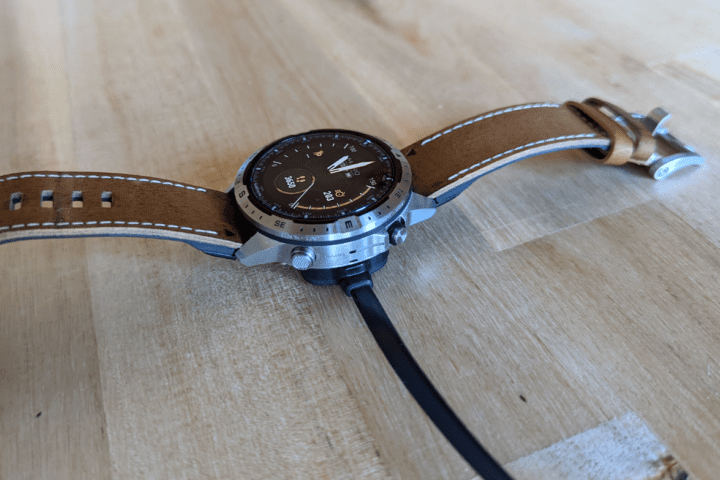
But far more important than the connection is the battery charging aspect. It’s charging in basically an hour, or just slightly faster. That’s a massive increase in speed over the existing Epix unit, which charges in about 2 hours and 30 minutes. Seriously.
In terms of battery usage/burn, it’s the same as the Epix – sitting at a claim of 16 days in gesture-based display (meaning it turns off the display unless our wrist is raised), or up to 6 days in always-on mode. I find I’m getting about 3-5 days per battery charge in always-on mode (my preference), depending on how the split is between GPS workouts or not.
Lastly, while it probably won’t matter to many people, do note that in general, virtually all of the functions that involve the smartphone app require internet to function. Meaning that while the watch will happily collect data without internet (as I tested with the Enduro 2 this summer for 8 days), and do so for a very long time (days/weeks/etc…), it won’t sync that data to the phone/app without internet. That’s because the Garmin Connect smartphone app itself is merely showing data from the Garmin Connect online platform.
The exception to this would be if you use the Garmin Explore app (also free), which then does allow syncing of data (namely tracks/routes) back and forth to a phone that doesn’t have internet. And again, this has no impact on viewing any of these stats on your watch itself, but only if you were spending extended periods of time without internet, analyzing your stats on the smartphone Garmin Connect app would not be possible. You can however still plug in your watch to a computer, and download the workout file and analyze that.
The Jetlag Advisor:
This feature isn’t quite ready yet for launch, but I figured I’d give a quick look at what it does and how it works. Garmin says it’ll be pushed out in a future update, but didn’t specify the exact timeframes. It sounds like this was more of a last-second decision to pull it from launch-day firmware.
In any case, the idea behind this is to provide guidance on how to deal with jetlag, notably across time zones. At present this feature is largely about providing guidance based on flight plans, rather than looking at data the watch is recording (e.g. your actual sleep, actual workouts, HRV, etc…). Yet, Garmin says that when they built out this feature, the groundwork was laid for that ‘your data’ driven approach, allowing them to have it start impacting components like Recovery Time, Training Readiness, etc… down the road. As noted earlier, this feature comes from their Firstbeat division, which is the same division that’s in charge of all those training load/recovery type metrics.
To begin, you’ll start on Garmin Connect Mobile to create your trip. You’ll go through and add your starting city and destination city, as well as the exact date/times of your flight departure/arrival. You’ll skip any connection data, since that doesn’t really matter here – it’s, well…more about the destination. You can add multiple legs though. For example, my trip I’m on as I write this has three legs covering 12 times-zones worth of travel, over the course of two weeks.
Once that’s done, you’ll start seeing data on the watch two days prior to your trip. This is under the new Jetlag Advisor widget, though, you can also view this information in the Garmin Connect Mobile app. Once your trip has started and you’ve arrived at your destination it’ll show you what your body should feel like:
The Jetlag Advisor is going to show you details about the trip in a bit of a ticker-style timeline as the day goes on. It includes the transit timeframe, as well as showing the current time at the destination. However, the main thing it’s doing is providing constantly updated guidance as your day goes along in different categories. These categories are:
– Light Exposure
– Light Avoidance
– Sleep
– Activity & Exercise
– Naps
– Caffeine
– Melatonin
– Nutrition
Within each of these, it’s going to give both general advice that’s not time sensitive (e.g. staging of meals), and some that’s very time-sensitive (light exposure, sleep, and exercise). For the light-sensitive ones, a message will pop up on the watch letting me know what I should be doing. For example, I’m over the Atlantic right now writing this, heading towards the States from Europe. A short bit ago I got this notice that I could stop trying to avoid light exposure.
If I look at later in the day, around 4-7PM when I land in Denver, it says I should aim for some exercise then, which is what I had planned anyway. It then also shows to seek light between 7-9PM, in aim of staying awake before falling asleep. You can skim ahead within the Jetlag Advisor and see what’s coming up.
In my case, I’m a bit of an outlier – I’ve got literally millions of miles flown, largely for work, and largely crossing oceans or continents. So in my case I’m looking at most of these suggestions as things I already know. But I suspect for someone who doesn’t have a schedule consisting of five trans-oceanic flights in 6 weeks, this is actually reasonably good and well thought through advice. It largely mirrors what I’d do in most cases based on what I’m seeing thus far.
You can change which features you want advice for. For example, if you don’t care to take Melatonin, you can turn off that guidance section. Obviously, you could turn off all the sections, but frankly the only way any of these sections show up is if you add a trip. Otherwise it won’t appear at all.
As noted earlier in the review, this feature is slated to come to the Forerunner, Fenix, Epix, and Venu series watches also. But which watches exactly and the timeframe for that isn’t solidified yet.
Sports Usage:
This section is focused on the sports usage, everything from indoor to outdoor sports, and with or without sensors. I’ll dive into it all here. The MARQ Athlete 2 contains all the Epix sports, plus those gained by the Enduro 2 a few months ago. And shortly, it’ll also gather those gained from the newly added sport profiles in the most recent beta. However, this section is more than just starting a workout, I’ll also cover the various training load and recovery aspects. The section afterwards covers navigation, maps, and routing.
Keep in mind, that within these sporting areas there are literally hundreds, if not thousands, of features. And there’s a strong likelihood you’ll never use 95% of them. But the reality is you’ll use 1-5% of them, every single day. And which 1-5% you’ll use will vary wildly from person to person. I use sports features every day that others never use, and vice versa. It’s fundamentally why Garmin leads this category. And perhaps more importantly, over the last few years, the software quality has increased substantially, largely through open firmware beta programs that go on for months.
To get started on a workout, you’ll tap the upper right button, which opens up the sports list (including the fancy rotating globe behind it):
The sports modes available on the MARQ Athlete are as listed below, albeit some of these aren’t really sports per se, but fall under the sport mode section in the Garmin world, like the Map Manager or Connect IQ Store. Also, keep in mind this keeps expanding – notably including those launched in beta just last week that I didn’t include below:
Run, Hike, HRV Stress, Health Snapshot, Bike Indoor, Treadmill, Bike, Open Water, Navigate, Expedition, Track Me, Map, Map Manager, Connect IQ Store, Multisport, Trail Run, Ultra Run, Virtual Run, Track Run, Indoor Track, Climb, MTB, eBike, eMTB, CycloCross, Gravel Bike, Bike Commute, Bike Tour, Road Bike, Pool Swim, Triathlon, Duathlon, Swimrun, Adventure Race, Strength, Climb Indoor, Bouldering, Ski, Snowboard, Backcountry Ski, XC Classic Ski, XC Skate Ski, Snowshoe, SUP, Surf, Kiteboard, Windsurf, Row, Row Indoor, Kayak, Golf, Tempo Training (Golf), Tennis, Pickleball, Padel, Project Waypoint, Walk, Cardio, HIIT, Yoga, Breathwork, Pilates, Floor Climb, Elliptical, Stair Stepper, Jumpmaster, Hunt, Fish, Tactical, Boat, Sail, Sail Race, Horseback, Tides, Reference Point, Clocks, Other
Each of these sport profiles are fully customizable, be it things like the data pages and data fields, or the aspects like auto-lap or auto-pause, or even ancillary settings like ClimbPro (for hiking/running/cycling in the mountains/hills) or alert settings. Every sport has a slate of these that can be tweaked, and you’ve got two main ways you can tweak them. First, is on the watch itself, and second is on your smartphone.
The MARQ Athlete now allows phone-based configuration for virtually every setting on the watch, including not just sport modes, but all the watch settings too. From GPS/GNSS satellite modes to widgets, even generic settings – all can be configured from the phone. About the only thing that can be viewed but not configured on your phone is downloading maps or adding new sensors. Those you’ll need to do from the watch itself.
If you crack open the Garmin Connect Mobile app, and then go into the settings, here’s a tiny sampling of what you can tweak. This also includes built-in sensors like the altimeter, barometer, and optical HR sensor, but you can’t add external sensors here (like a power meter):
The MARQ Athlete 2 allows up to 8 custom data fields per page, and then allows basically a limitless number of data pages you can create. Undoubtedly, there’s a limit somewhere, but frankly if you find said limit, you need to take a moment and think about your life choices. All of them. Beyond that, there’s also the ability to customize stock data pages with things like power gauges, heart rate graphs, and elevation pages. Plus there are data pages like ClimbPro, maps, and so on.
And again, remember each sport profile has its own data pages, that can also be specific to a sport profile. For example, cycling has cycling power, whereas something like swimming has stroke rate, and so on. By and large, Garmin has done a good job at just making the defaults for all of these pretty solid, so it’s not like you have to start from scratch on these.
Now before we start, it’s worthwhile noting that the MARQ Athlete 2 will automatically default to using a new GPS mode called ‘Sat IQ’, also confusingly known as ‘Auto Select’. This means that it’ll switch automatically between the higher power multi-band/dual-frequency GPS mode that is really good in tough conditions (cities/mountains/etc…), but then reduce power to save battery life in more mundane conditions (farm roads, suburban neighborhoods, etc…). This new mode makes a massive difference in battery life, while in my testing also doing a great job at quickly scaling up to deal with tough environmental conditions for GPS. You can change this though within the GPS settings for both the entire watch, as well as on a per sport mode basis:
With everything all set, it’s time to start the activity. If it’s an outdoor sport profile, it’ll go off and find GPS, which usually only takes a second or two. If it’s an indoor profile, then it only needs to lock your heart rate in (it’ll largely have already done this). And then if you’ve got any external sensors, it’ll connect to those automatically.
Once our activity is started (they all act roughly the same), then you’ll see the data pages you’ve set up. You can tap the buttons to change data pages, and here’s a smattering of them mid-run:
This past summer Garmin launched native running power on their watches. At the time though, it required a Garmin accessory such as an HRM-PRO/PRO-PLUS, HRM-RUN, HRM-TRI, or RD-POD, in order to display said power. However, last week in beta they launched the running power using just the sensors inside your watch (so-called wrist-based power). Thus, no more accessories required. That feature isn’t yet on the MARQ Athlete 2 in the production builds, but I’d expect you’ll see it in a matter of days in the beta builds, likely with a late October or early November target to production. Though, from a practical standpoint, the numbers will basically look the same on the watch to you.
Further, for running and cycling modes (but not hiking), you’ll get Stamina, if you’ve enabled that, which will show how much time/distance your body theoretically has left at the current intensity. You can also view this after the fact in Garmin Connect. This can be used for pacing in both training and racing, but mainly racing – and mainly long-distance racing. But you can also use this even in shorter interval workouts – last week a 10-miler:
And here’s one from this weekend – nothing crazy, but you can see the ups and downs of it.
I dive into this in more depth in my Forerunner 955 In-Depth Review, within the sports section – showing how it works for both interval workouts as well as longer steady-state workouts and multi-hour efforts. Overall, I’ve found it reasonably close for most longer efforts, though a bit more wobbly for shorter efforts.
Any data that you have from any paired sensors will also appear on the watch in real-time, as well as afterwards. These can be a blend of both ANT+ & Bluetooth Smart sensors. These sensors are used across a number of different sports. Here’s the full listing at present:
Club Sensors, Headphones, Heart Rate, Speed/Cadence, Foot Pod, Tempe, Lights, Radar, Power, VIRB, Shimano Di2, Shifting (e.g. eTAP), Extended Display, RD Pod, Muscle O2, Xero Laser Locations, inReach, DogTrack, Smart Trainer
Note that you can have multiple sensors of the same type, and give them names. Such as multiple power meters for multiple bikes, or perhaps multiple chest straps floating around.
Additionally, the MARQ Athlete 2 can broadcast your heart rate (and even running pace/cadence) to 3rd party apps and devices. This means you can broadcast your watch’s heart rate (from the optical HR sensor) to your bike computer, or to apps like Peloton or Zwift. It does this on both ANT+ & Bluetooth Smart. You can configure this within the sensor settings, including to automatically broadcast when you open up/start a sport profile:
I find this useful in cases where the accuracy of the optical HR sensor is perfectly fine (such as indoor cycling), and I just need to broadcast it to Zwift or Peloton.
Once your workout is complete, you’ll get a full slate of metrics on a summary page. This includes charts and graphs in areas like heart rate, pace, power, speed, and more. Plus, there are further deep-dive pages for things like zones, as well as just a giant list of summary info. Here’s a quick gallery of some of that:
Then, there’s even more information displayed on Garmin Connect (both mobile and website). Not just in terms of way more graphs, but also other data points that just aren’t shown on the watch post-workout (for example, Stamina trends or more detailed Running Dynamics).
Now, completing a workout and viewing the summary pages is essentially just the starting point for the amount of data coming out of that workout. The next most logical place to look from a training standpoint is the Training Status and Training Readiness pages. These were fully revamped this past summer across all of Garmin’s most recent watches, which significantly changes how you look at this data. I dive into the Training Readiness and Training Status features here in more depth, but let’s quickly go through the general gist of it here:
Training Readiness: This new metric aims to be your one-stop shop to decide whether or not to train that day. It blends Sleep (vs both short and long-term history), Recovery Time, HRV Status, Acute Load, and Stress. In short, you can spike one category (badly) without necessarily killing your next training day. But all categories aren’t created equal.
Training Status: This is looking at your acute load, HRV status, load focus, and VO2Max trends. This one is less about should you train, and more about how you’re training. Meaning, are you doing too much high intensity, or too much low intensity? That’s what’ll give you an unproductive status. In other words, how would a coach look at your training log, ignoring most other life/feeling type metrics.
Now, those two top-level things get intertwined in a few different ways, but they are effectively umbrellas over a slate of additional components, most notably:
HRV Status: This is measuring your HRV values constantly while you sleep, and then comparing it against your 3-week baseline, up to a 90-day rolling window baseline. A single night of drinking doesn’t tank this score, but three nights of partying won’t keep you in the green.
Acute Load: This is looking at your last 7 days of load, except the load now burns off dynamically. Meaning, a hard training day 7 days ago is far less impactful to the score than a hard training day yesterday. Previously this was called 7-Day Load, now it’s Acute Load.
Load Focus: This shows which categories your training efforts have fallen into, over the last 4 weeks. These include Anaerobic, High Aerobic, and Low Aerobic. Basically, you need to have an even training diet to get faster. Simply running hard/all-out every day won’t make you faster. It’ll just get you injured and slower.
Recovery Time: This calculates how much time you need till your next hard intensity workout. As is often misconstrued, this isn’t till your next workout, just your next hard one. This is largely the same as before. Exceptionally good sleep can speed this up, and inversely, a high-stress day can slow this down.
So, how does this all look? Well, let’s start with Training Readiness, which I’d argue is the most useful one to keep an eye on. That’s basically looking at everything holistically and whether or not you should train at that moment in the day. You’ll notice this score will rise over the course of the day, because naturally you’re recovering from the last workout. But, if you go out and do a hard/long workout, this number will slam back to reality (single digits). Here’s my score, after a modest interval run two days ago and then a shortish interval trainer ride last night. While then spending the day thus far sitting on a plane:
If I scroll down, you’ll find the components that make up the constantly shifting Training Readiness score:
– Sleep: This one is specifically looking at last night’s sleep
– Recovery time: This looks at your Recovery time from last workout, in hours
– HRV Status: This is comparing your 7-day trend versus historical trend
– Acute Load: This is looking at your 7-day trend
– Sleep History: This is looking at last night versus your prior 2 nights of sleep history
– Stress History: This is looking at the 3 days of daytime data (excluding overnight readings)
The most heavily weighted components are Sleep and Recovery Time (and in turn, recovery time is based on your recent workout efforts). Here’s what mine looks like right now:
As you can see, my sleep last night wasn’t awesome – hence being orange (only about 4 hours, up late packing, and then had to be at the airport early). However, my other recent sleep is reasonably good (woot to the weekend!), thus, I’m holding the fort down. Because HRV status hasn’t finished its 19 days yet, that’s showing as grey. HRV status is used as a bit of a counterweight here, given it’s more stable than regular swings.
In using Training Readiness now for about 5 months, I find it fascinatingly good at predicting whether or not I should be heading out for that hard run, or just taking a nap. Its goal in life is generally not to judge you with giving you an ‘Unproductive’ score like Training Status might, but rather, to simply and factually state that you’ve either got too much on the plate in your body right now, or you’re ready to go out and throw down some hard efforts.
Then you’ve got Training Status. The purpose of Training Status is to figure out whether or not your training load is appropriate for minimizing injury, as well as whether or not that load type is best to make you faster. In other words, it tracks how quickly you’re ramping up training load, while also looking at the breakdown of the types of training you’re doing (e.g. interval workouts vs longer easy workouts), and whether you’ve got the right balance of that.
Training Status is in turn broken into the following components:
– Acute Load: What have you done in the last 7 days, weighted towards more recent activities impacting things
– Load Focus: How has your last 4 weeks of training allocation been?
– VO2max: Which way is this trending?
– HRV Status: Like above, how balanced is this?
– Recovery time: This is in hours, and is the same as in Training Readiness.
Here’s how this looks broken out into those components. The main one I’m mostly looking at is my Acute Load. I’m aiming to keep it in the green tunnel, which is basically the ‘healthy’ realm for me, based on my recent historical load.
So for example, if I have an offseason for November/December and dramatically reduce my training load, you’ll slowly see this green tunnel shift downwards. Likewise, if I start a big training block in January, then you’ll probably see me spike over the top of it. That’s fine if managed well, but as any coach can tell you, that’s also how you get injured.
I’ve found that once Garmin split these pieces out this past spring (Training Readiness vs Training Status), it’s started to be much more reliable, and much more clear on why it’s either upset at you, or happy with you. Previously, a single training camp style week of heavy load would get the dreaded ‘Unproductive’ message. Whereas now, it’s more willing to tolerate that (up to a point anyway). The challenge Garmin has is that while you can now put in planned races/goals, these components don’t really take that into consideration – especially if it’s incorrectly predicting your VO2Max (which can take time to correctly update). Nonetheless, the Training Readiness and Training Load metrics are easily the most advanced ones out there today, surpassing what Polar has done in recent years (and far beyond what Whoop has too).
Maps & Navigation:
Finally, before we wrap things up, let’s briefly talk maps and navigation. As noted earlier, this is identical to what you’d find on the Enduro 2 series in terms of the new features like Next Fork. I explain all the options in much more detail there in that Navigation section. However, at a high level, you’ve got a few core options for navigation on the MARQ Athlete 2, which are:
– Point of Interest: Pick an item from the built-in POI database, such as a town/monument/service/etc…
– ‘Around me’: This lets you look at the map around you, and visually pick out where you want to go
– Back to Start: This will navigate back to the starting location using the route you came on
– Navigate Activities: This will treat a past activity as a course, basically repeating it
– Saved Locations: This lets you navigate to locations you’ve previously saved
– Sight ‘N Go: This lets you utilize the compass and then lock a direction and have it keep you navigating in that direction
– Coordinates: You can manually enter in the exact GPS coordinates you want to go to
– Use Map: You can zoom in/out/around on the map, and pick the exact point you want to go to (such as the top of a mountain)
Some of these, such as POI, Around Me, and Use Map, depend on the included maps. As with all of the Fenix 7/Epix/Enduro 2 series watches, maps are included, either pre-loaded or freely downloadable. You can see which maps are pre-downloaded on your unit under the Map Manager feature, as well as add other regions. You can also do this from a computer using a USB cable and Garmin Express. Within the Map Manager you can see/manage how much space you have, and how much space each map requires.
You can see above that the TopoActive Europe Maps about 11.5GB. And on the previous page it showed I had 15.5GB available (the watch has 32GB of space internally, but some of that is used for both other maps as well as internal stuffs). Remember, map download sizes here are less about landmass size, and more about the amount of trails/roads/points of interest/etc… since that requires more data space.
For context, here are the current sizes of these maps. These will undoubtedly change slightly over time, but shouldn’t change too dramatically over the years:
TopoActive North America: 9.4GB
TopoActive Europe: 11.5GB (*See update below for added Europe breakout)
TopoActive THID: 1.9GB
TopoActive MENA: 1.4GB
TopoActive Australia & New Zealand: 1.8GB
TopoActive Africa: 4.4GB
TopoActive Japan: 3.9GB
TopoActive Hong Kong & Macau: 17MB (yes, megabytes)
TopoActive South America: 6.1GB
TopoActive Taiwan: 96MB
TopoActive Korea: 213MB
TopoActive SGMYVNPH: 1.2GB
TopoActive China Mainland: 6.5GB
In addition, for Europe, Garmin has added the ability to download specific regions when you connect via computer instead. This is super helpful if you’re a bit tight on space. They are as follows:
Europe Whole: 11.5GB
Europe West: 6.3GB
Europe Central: 6.4GB
Europe East: 6.2GB
In the case of the Europe map sub-regions, they overlap a bit, which is why if you add each component individually, it’s far more than just downloading the main Europe one. I’ve added all of these regions below in a gallery, so you can see exactly which countries are part of which regions:
Note you can only toggle one of the Europe regions, or all of Europe. So it’s either all of Europe, or just a single region, since the regions overlap a bit such that doing two regions is generally the same as doing all three as one consolidated download.
In my case, I’m mostly using the pre-loaded courses option for all my navigation needs. I’m creating these courses on either Strava Routes or Komoot, and then they automatically sync to Garmin Connect and onwards to my watch. It all works pretty much instantly. You can also create routes in Garmin Connect (web or smartphone app), including adding things like waypoints. Once a route is synced to the watch, you’ll see it listed under navigation (for the applicable sport):
From here you can see the course details, including a map, elevation stats, and more.
Once you’ve started the course, you can then get turn-by-turn directions, ClimbPro climb data, as well as see the full map and trail as you progress. This includes the newish Next Fork, which shows the upcoming trail junctions automatically. That feature actually doesn’t require any route loaded at all. It just uses the map data to figure out what trail you’re on and how long till there’s a junction.
Again, I dive into this and all the mapping/navigation components in far more detail here in this section.
GPS & HR Accuracy:
For this section I’m going to take a look at accuracy in three core areas: GPS (or GNSS), Heart Rate (optical), and barometric altimeter (elevation). I’ll do this compared to either known-good data sources (a sign-post for elevation), or other chest straps (Polar H10 or Garmin HRM-PRO Plus). And for GPS tracks, I’ll be looking primarily at where I actually went, or where the trail went on the map. Meaning, if a unit has me floating across a river and I didn’t swim across it, then I’m reasonably confident it’s incorrect.
First up, we’ve got an indoor ride with some solid intensity. As you can see, this pretty much nails it against the chest strap. There’s a tiny bit of delay for a few seconds in one sprint interval, but otherwise spot-on.
So then heading outside for some rides, we’ve first got a warm-up, and then sustained loops around a cycling-only route. Following that is a cool-down. You can see it handles pretty darn well, far better than the Fitbit Sense 2:
For that same ride, if we look at the GPS track, at first I was a bit concerned, as there was quite a bit of variability in the colors on the map. But then I realized the yellow track was the most precise, one, and all the blackness was the Fitbit Sense 2 doing the Fitbit Sense 2 thing: Which is not being accurate. The multi-band units of the Edge 1040, Wahoo ROAM V2, and MARQ were all basically spot-on.
You can see this within the entry/exit points to the loop, as well as simply the loop itself:
Next, another outside ride. This time with some gravel mixed in. On this ride, which was relatively straight, there was nothing of note here.
Even in the forested sections, it was spot-on the path. Something that can’t be said by some of the other units.
And likewise, the HR was generally acceptable, but as is often the case, you see the limits of wrist-based heart rate while riding with strained wrists on handlebars.
Finally, let’s look at a city run. For this data set, I’m just gonna focus on Epix vs MARQ 2. A portion of this is in a complex downtown section with 20-30 story buildings barely 2 lanes apart. Outside of this area, things looked virtually identical, including under some bridges and next to other tall buildings.
However, in the downtown core, it was a bit messier. On this particular run the MARQ didn’t quite perform as well as the Epix. Both were forced into multiband configuration. I had changed the direction with each pass, as to provide equal opportunity for signal.
Likewise, on this run I did longer intervals, followed by shorter intervals. For the long intervals, the wrist-based data from the MARQ 2 was very close to the chest strap. However, on the shorter intervals at the end (basically 200m intervals), the MARQ did struggle quite a bit. I haven’t seen this level of struggle from this sensor in other workouts on other devices, but…such is life.
Ultimately, GPS performance in the majority of conditions is looking very strong, with a few minor quibbles in the buildings, as well as one workout with very short duration intervals where it struggled. Other indoor trainer as well as shorter duration runs with equally short intervals have been fine.
(Note: All of the charts in these accuracy sections were created using the DCR Analyzer tool. It allows you to compare power meters/trainers, heart rate, cadence, speed/pace, GPS tracks, and plenty more. You can use it as well, more details here.)
Wrap-Up:
Here’s the thing: This watch isn’t designed to be a timepiece passed down from generation to generation. Just like a fancy digital camera isn’t. It has a purpose for a given time period, and then it becomes more or less obsolete. As with any other product category, sometimes you pay more for features and sometimes you pay more for materials or branding. In the case of smartwatches from Garmin, these will physically last a decade or two, but practically speaking Garmin stops giving meaningful new features after 2-3 years. The 1st gen MARQ Athlete series, now 3 years old, has stopped receiving meaningful updates, only receiving relatively minor updates alongside the rest of the Fenix 6 series. Rightly or wrongly, that’s simply the cycle of life for Garmin watches. But again, my Garmin Forerunner 305 GPS watch from nearly 17 years ago continues to work.
But that likely won’t matter for most people buying this watch. Instead, those people want the features and functions of an Epix watch, but with the looks of a higher-end timepiece. Something that doesn’t look out of place in more formal settings. And the MARQ series delivers that – even if it costs a pretty penny. Or, a lot of pennies.
With that, thanks for reading!
FOUND THIS POST USEFUL? SUPPORT THE SITE!
Hopefully, you found this post useful. The website is really a labor of love, so please consider becoming a DC RAINMAKER Supporter. This gets you an ad-free experience, and access to our (mostly) bi-monthly behind-the-scenes video series of “Shed Talkin’”.
Support DCRainMaker - Shop on Amazon
Otherwise, perhaps consider using the below link if shopping on Amazon. As an Amazon Associate, I earn from qualifying purchases. It doesn’t cost you anything extra, but your purchases help support this website a lot. It could simply be buying toilet paper, or this pizza oven we use and love.

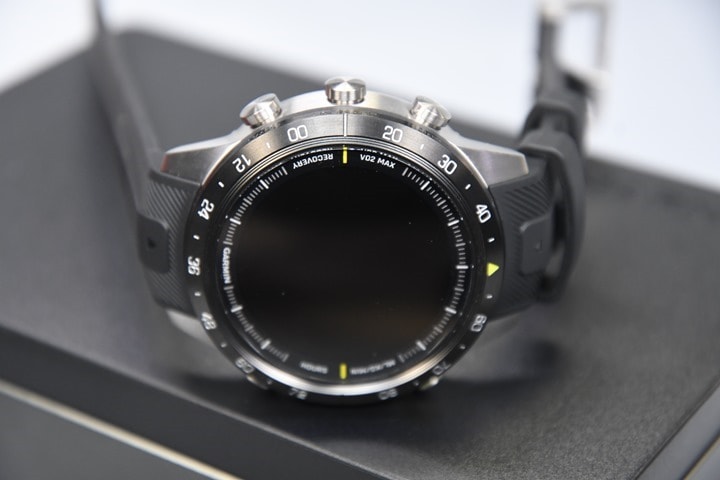
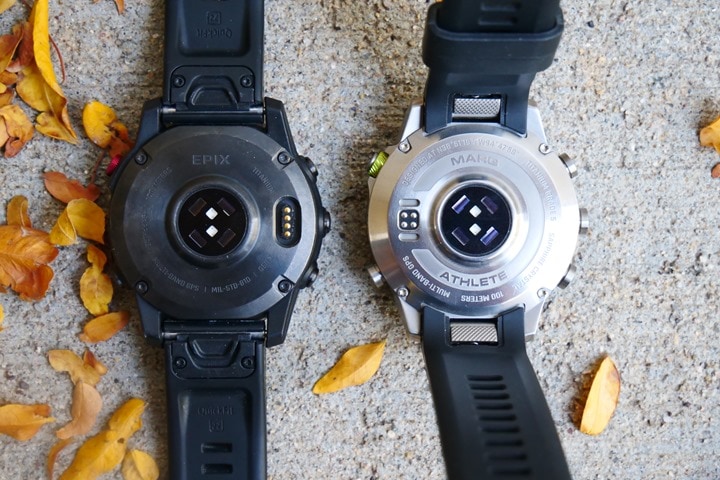
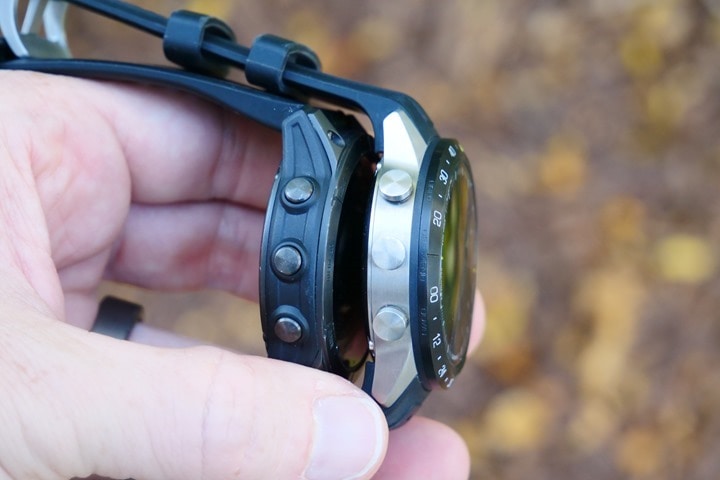
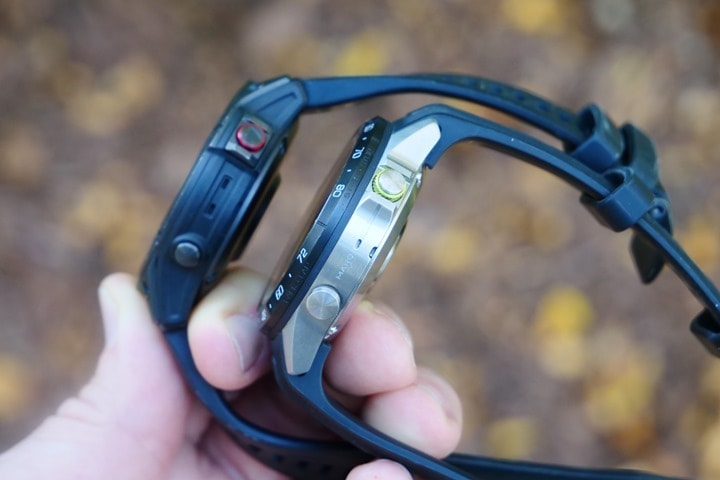
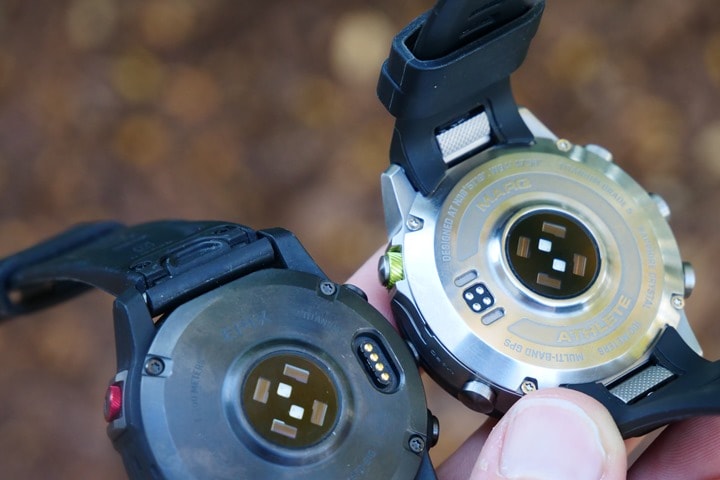
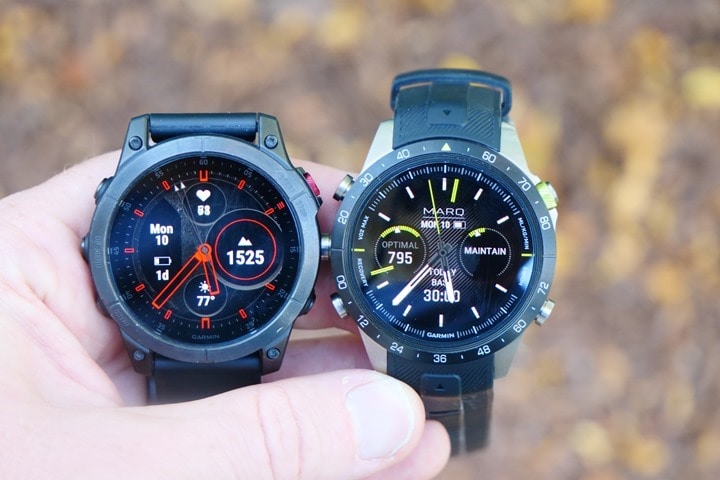
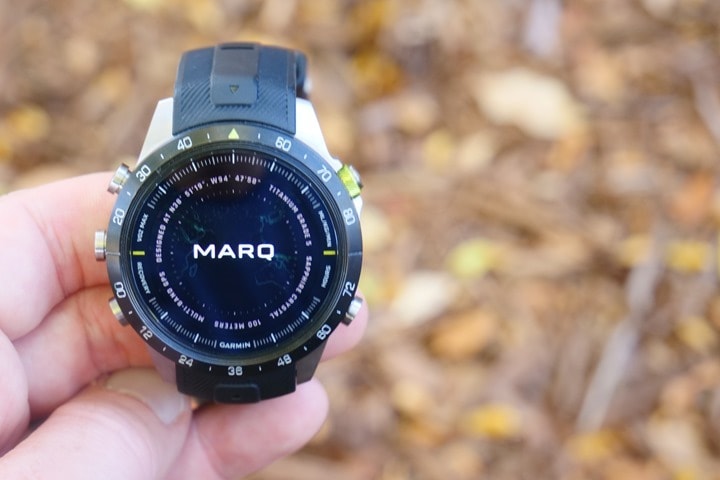
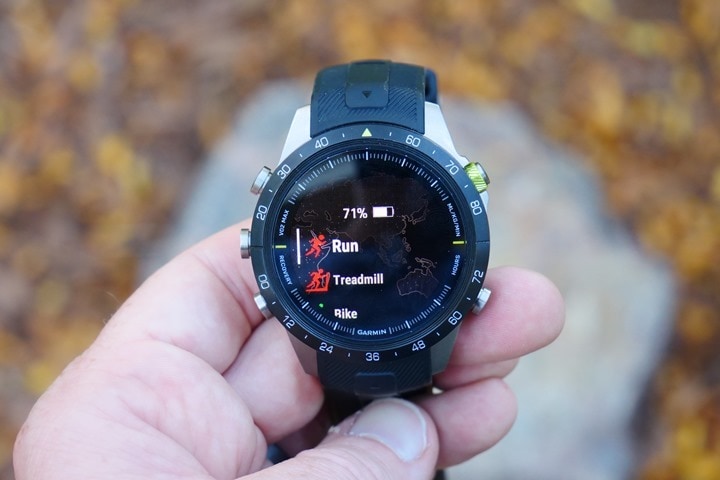
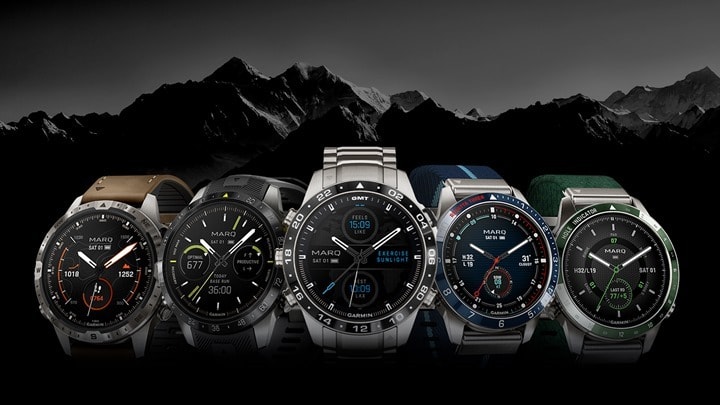
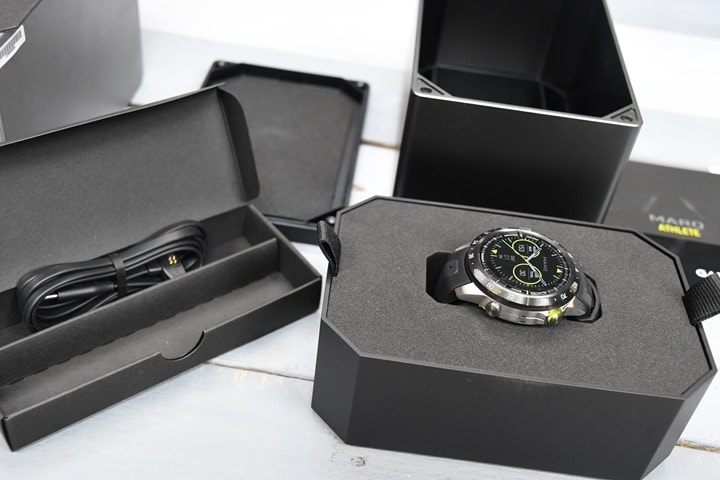
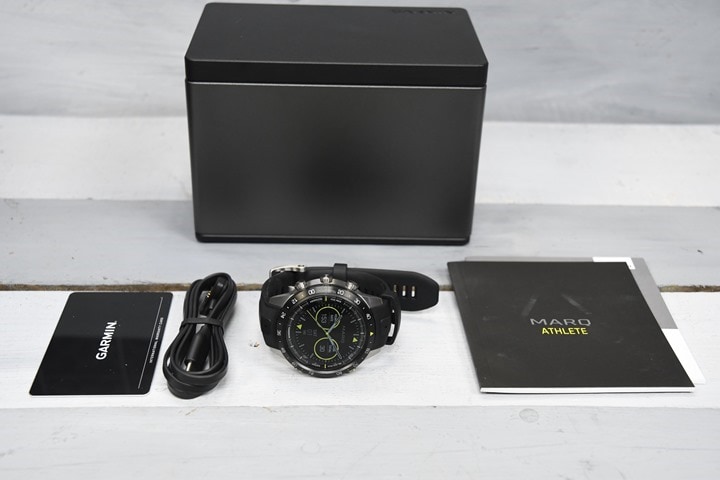
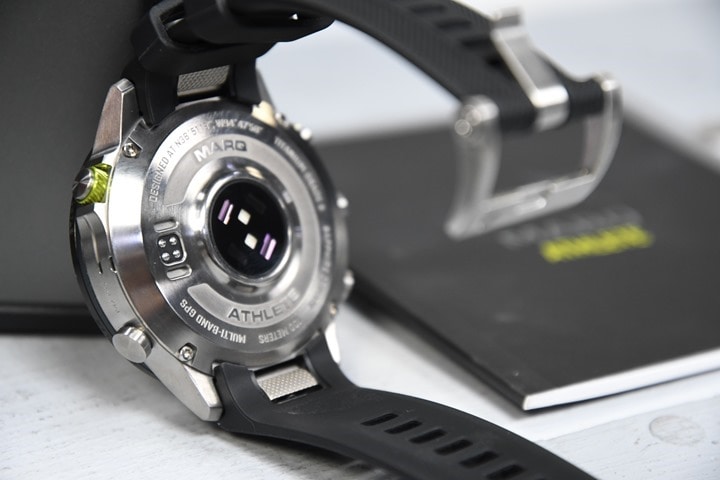
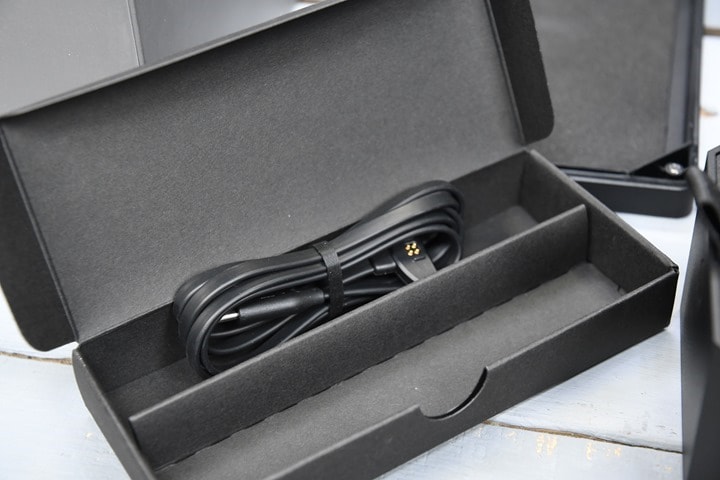
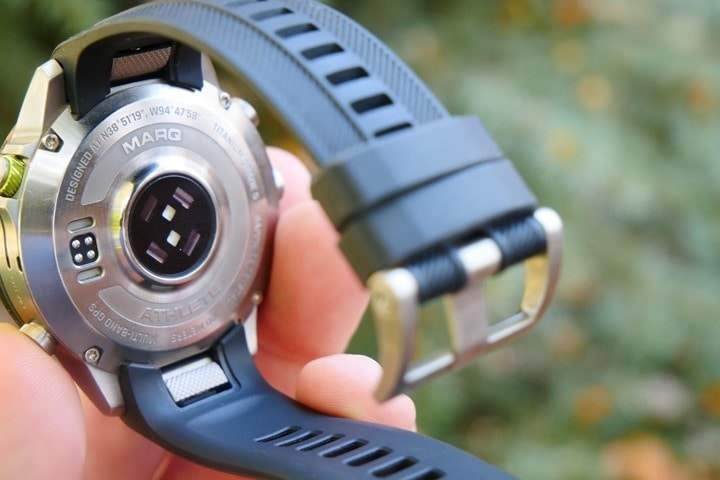
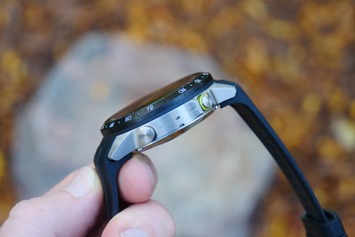

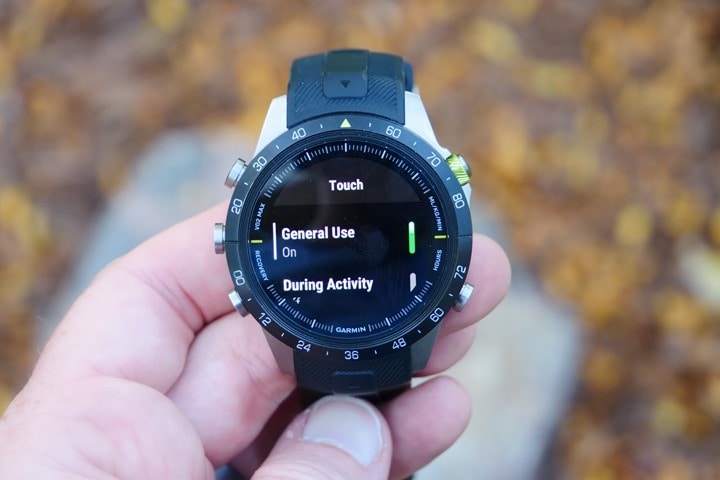
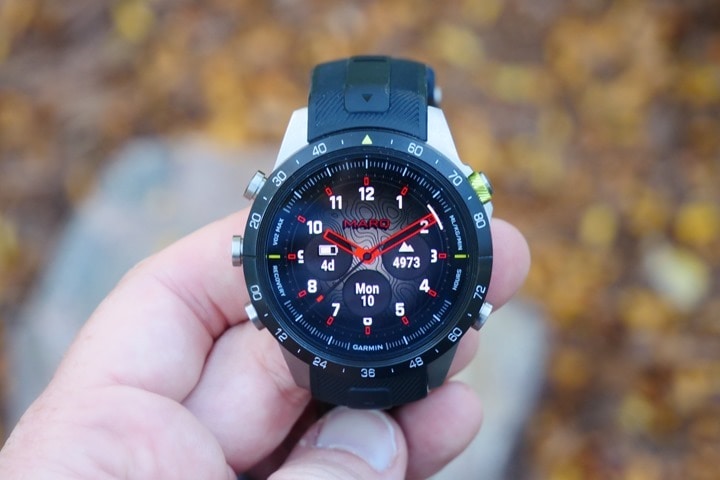
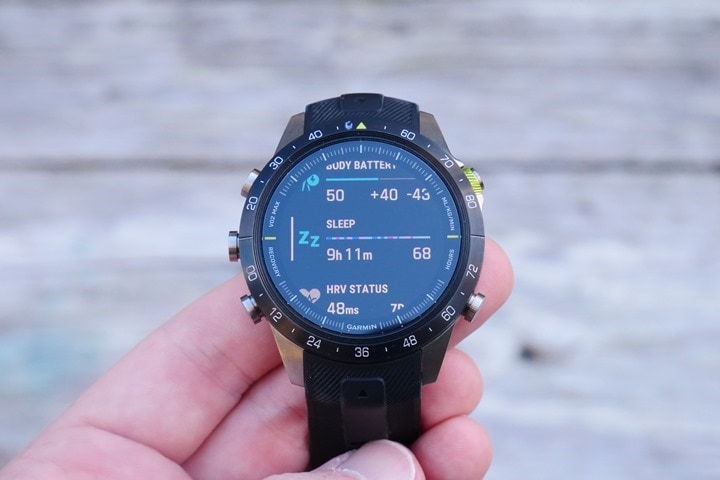



![clip_image001[6] clip_image001[6]](https://media.dcrainmaker.com/images/2022/10/clip_image0016_thumb-3.png)
![clip_image001[8] clip_image001[8]](https://media.dcrainmaker.com/images/2022/10/clip_image0018_thumb-3.png)
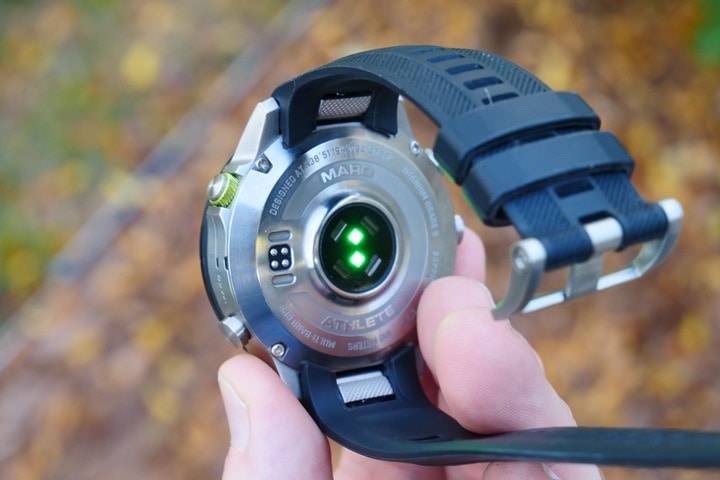
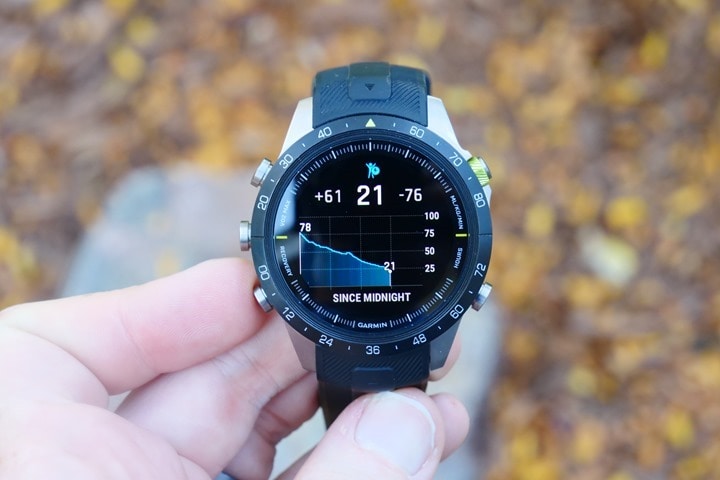
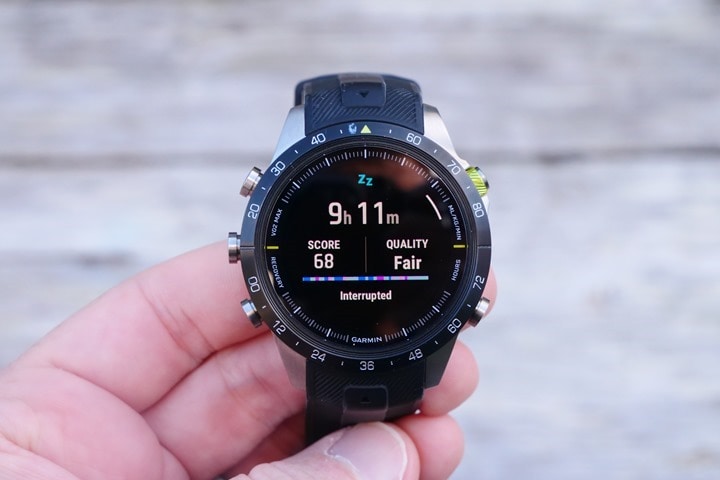
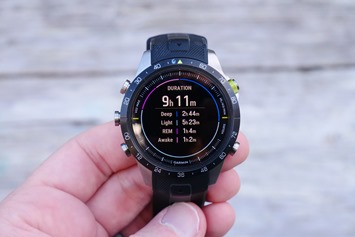
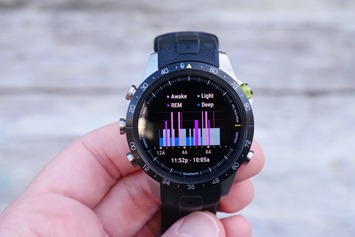
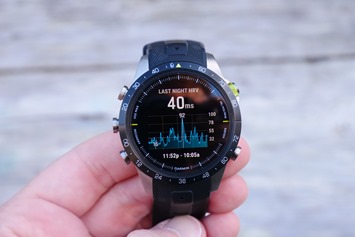
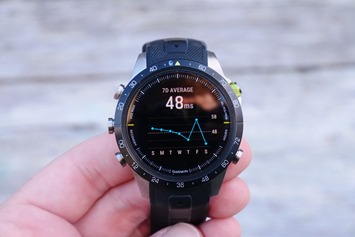
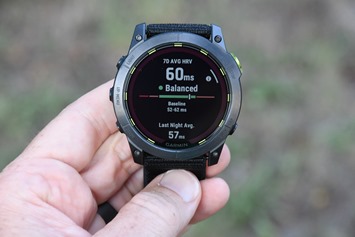


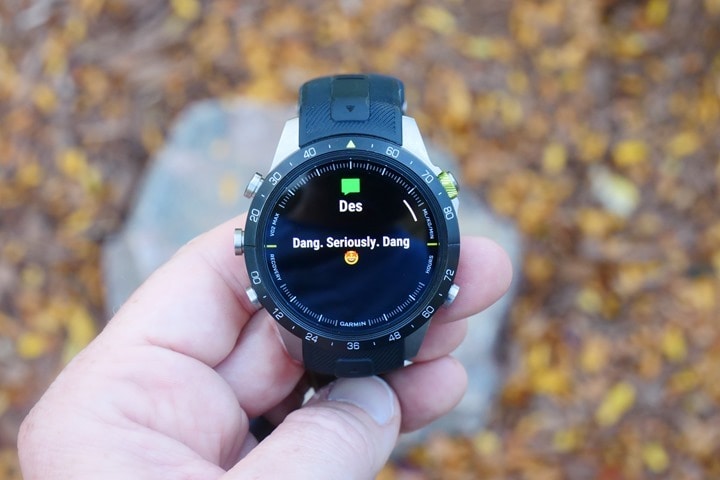
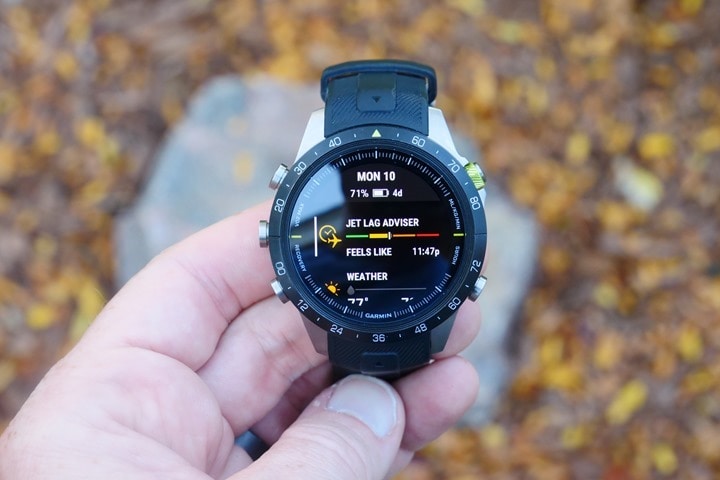
![clip_image001[10] clip_image001[10]](https://media.dcrainmaker.com/images/2022/10/clip_image00110_thumb-3.png)
![clip_image001[12] clip_image001[12]](https://media.dcrainmaker.com/images/2022/10/clip_image00112_thumb-3.png)
![clip_image001[14] clip_image001[14]](https://media.dcrainmaker.com/images/2022/10/clip_image00114_thumb-1.png)
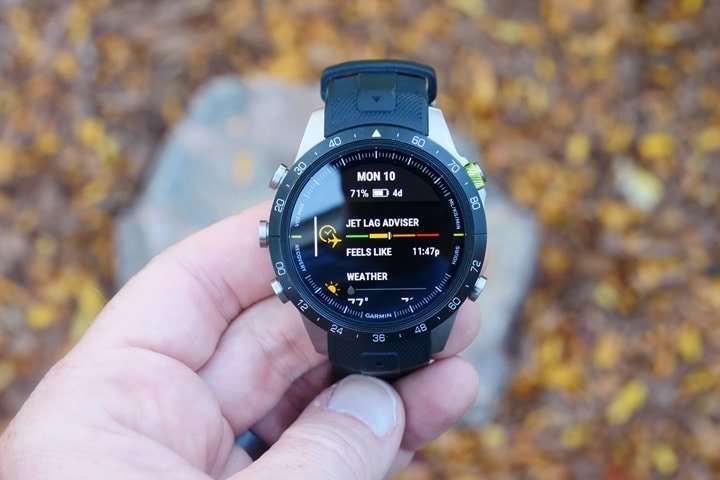

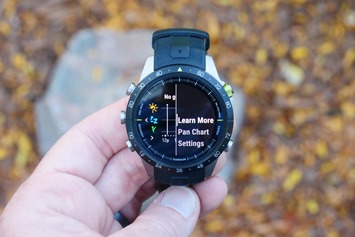
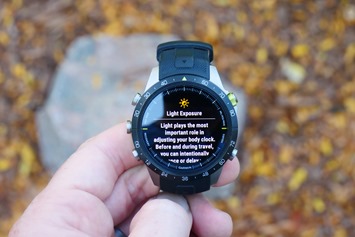
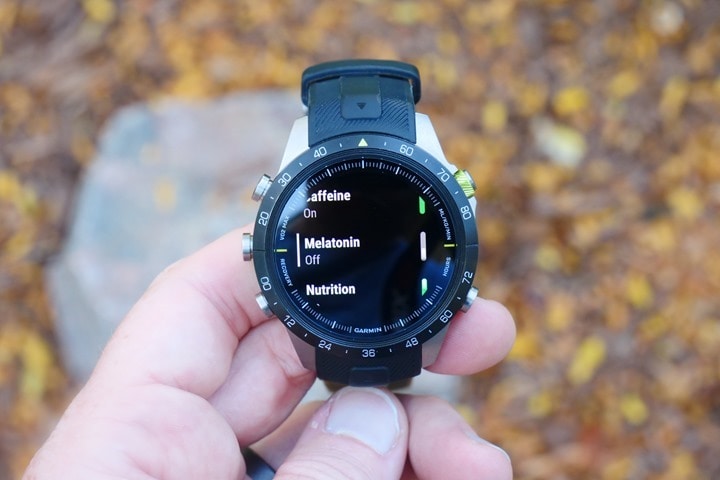
![clip_image001[7] clip_image001[7]](https://media.dcrainmaker.com/images/2022/10/clip_image0017_thumb-1.jpg)
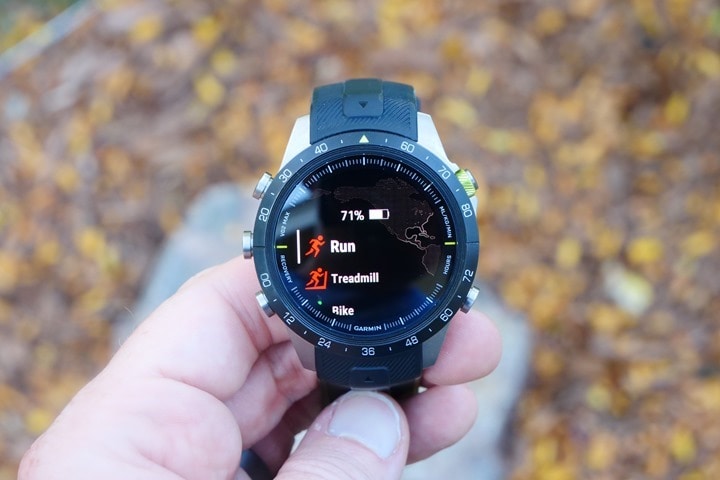
![clip_image001[20] clip_image001[20]](https://media.dcrainmaker.com/images/2022/10/clip_image00120_thumb-1.png)
![clip_image001[22] clip_image001[22]](https://media.dcrainmaker.com/images/2022/10/clip_image00122_thumb-1.png)
![clip_image001[24] clip_image001[24]](https://media.dcrainmaker.com/images/2022/10/clip_image00124_thumb-1.png)
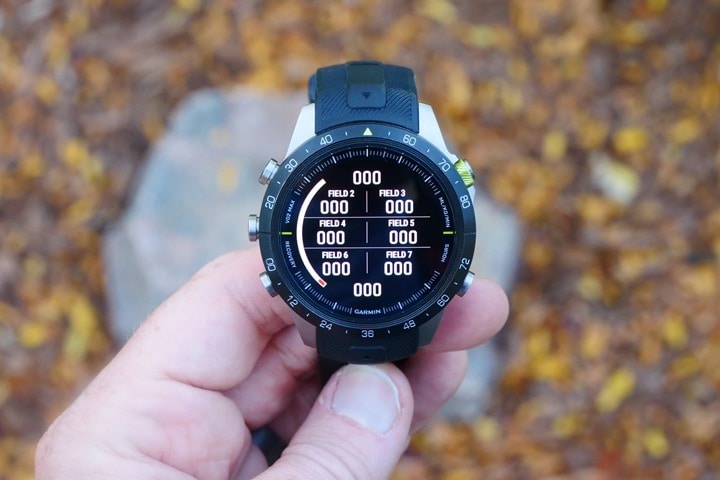
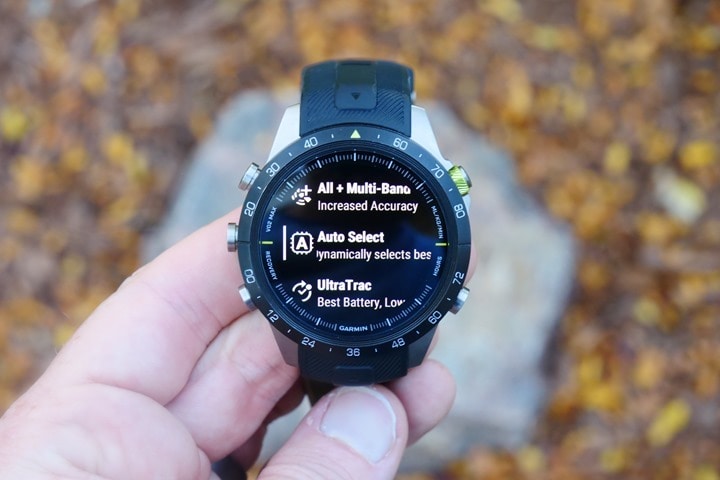
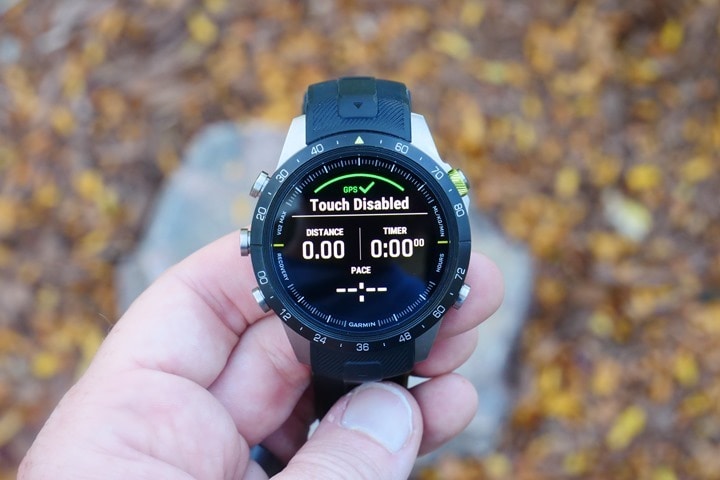
![clip_image001[9] clip_image001[9]](https://media.dcrainmaker.com/images/2022/10/clip_image0019_thumb-1.jpg)
![clip_image001[11] clip_image001[11]](https://media.dcrainmaker.com/images/2022/10/clip_image00111_thumb-1.jpg)
![clip_image001[18] clip_image001[18]](https://media.dcrainmaker.com/images/2022/10/clip_image00118_thumb-1.png)
![clip_image001[16] clip_image001[16]](https://media.dcrainmaker.com/images/2022/10/clip_image00116_thumb-1.png)
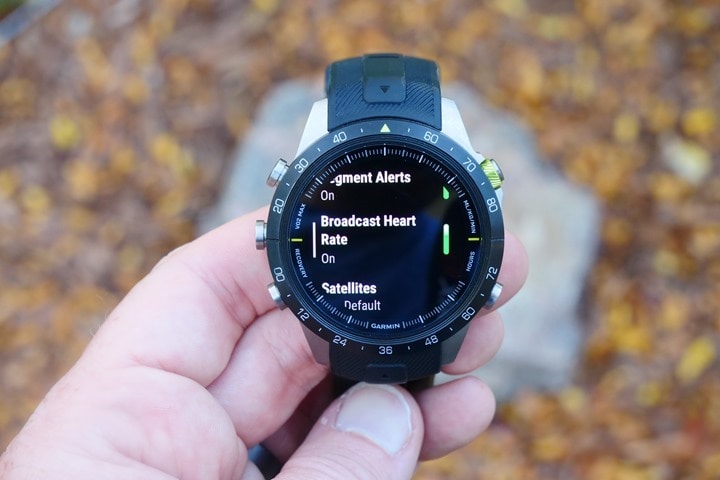
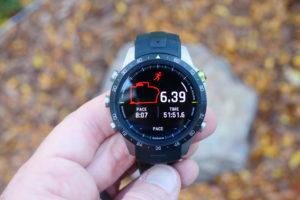
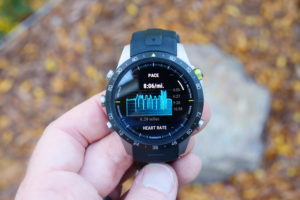

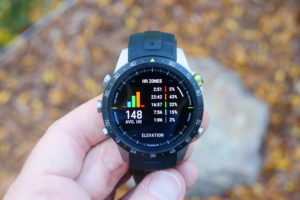
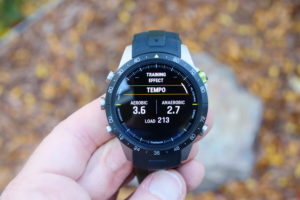
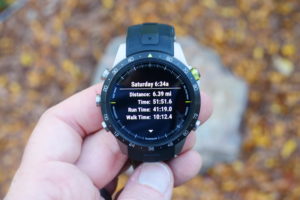
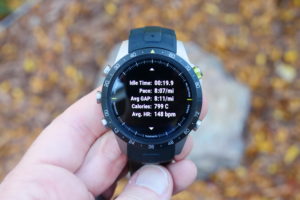
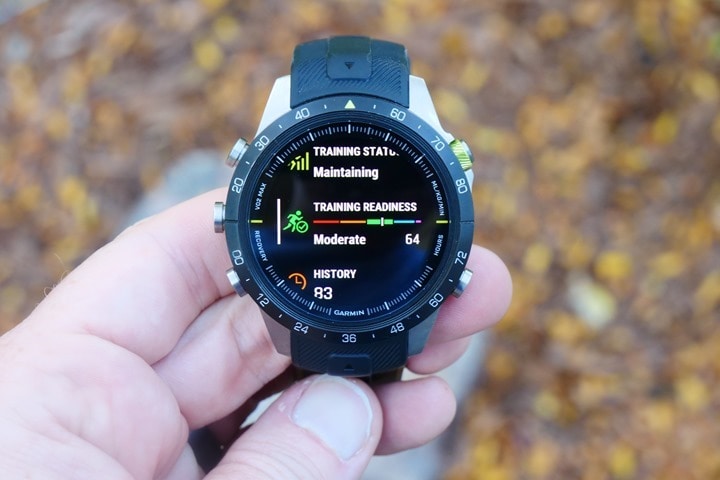
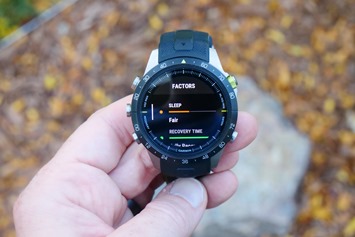
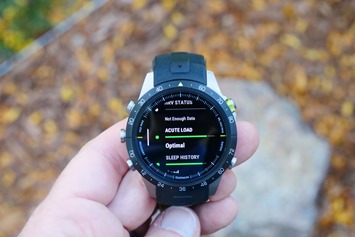
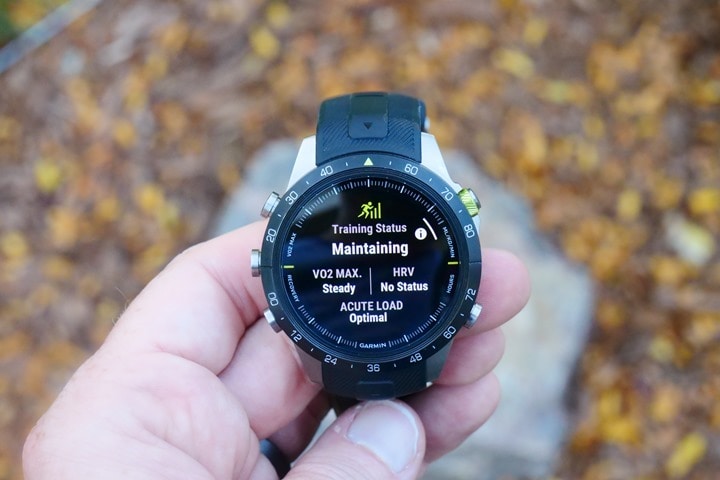
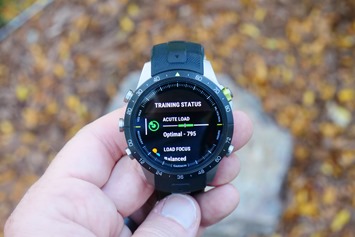
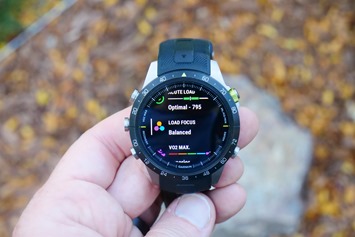
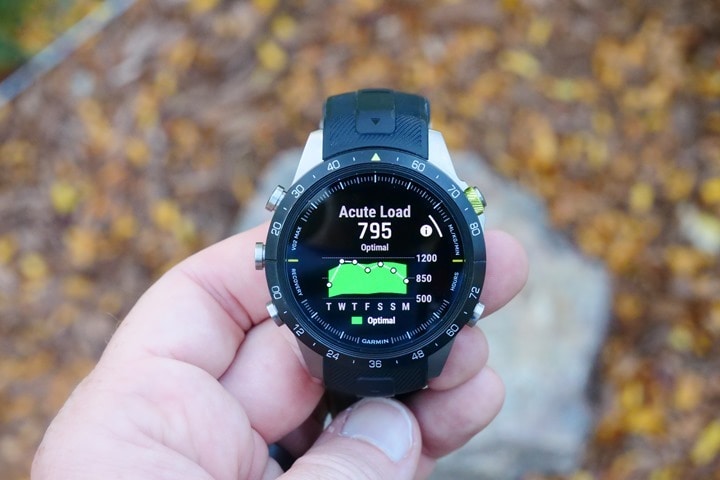

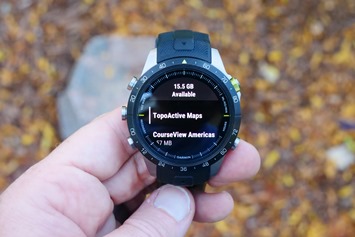
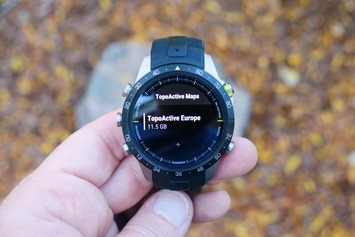




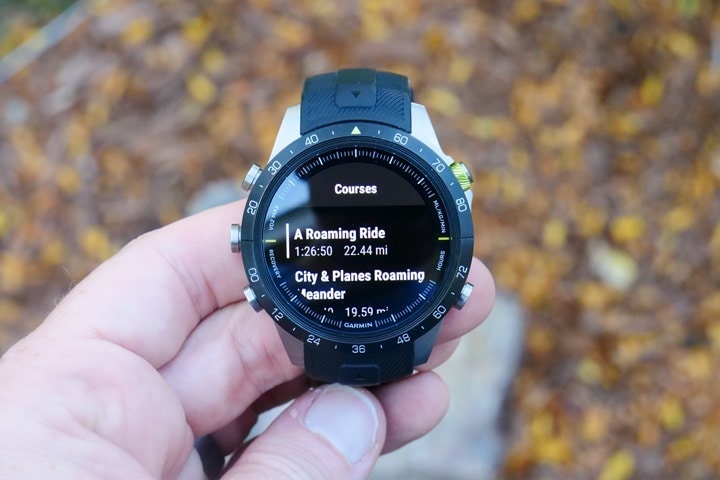
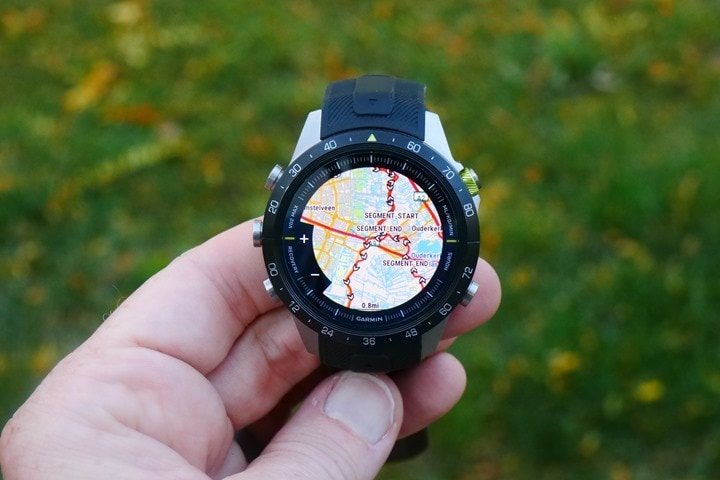






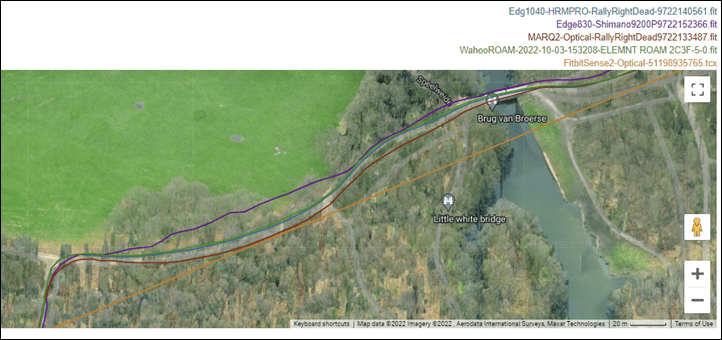




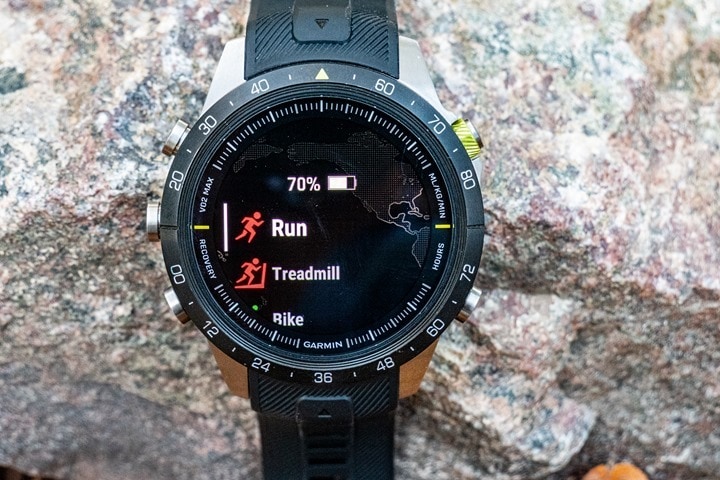



















I MUST SAY… This is strikingly beautiful. Would definitely consider this over the Apple watch Ultra.
Having bought and just returned the Ultra after training with it for ten days, and as a Fenix 7X Sapphire Solar owner, the two are not even close to being comparable. That will apply here too, but even more so (although the Marq battery is a lot smaller than my 7XSS).
My biggest surprise is that Garmin now claim Scandinavia is eastern Europe. Denmark being central i can live with :)
It depends which map you use. Microsoft Azure uses the official UN map which places Netherlands as “West Europe” and Ireland as “North Europe” which confuses everyone every single day. I can only assume Garmin have a reason behind the scenes somewhere.
I actually prefer the more rigid MARQ Athlete strap as it’s more forgiving on how big the watch appears on those without large wrists. Whereas the Fenix/Epix strap just tends to flop down the side of the wrists, accentuating the size of the watch and leaving a big gap between the side of the case and the strap, the rigid profile of the MARQ’s strap holds a curve around narrower wrists making it look a more natural fit.
I’m interested to see if the introduction of the jet lag feature will make any difference to how Garmin deals with ‘days’ that aren’t 24 hours long.
I’m interested to see how this fits in with ‘sleep tracking’. It’s already difficult if you are a shift worker, to set this up properly.
If you do, as I do, and occasional night shift, I have to adjust the ‘sleep time’, within the app, so that it picks up that I might sleep in that time. If you adjust it to have the whole day as a window, then you get the watch face in sleep mode all the time. Surely they can work out, that when you’ve stopped moving for a couple of hours, your resps have lowered, along with your heart rate, that you might be sleeping. It has the MoveIQ function, how about the Not MoveIQ function!😂
I have small wrists as well, and I found the silver EPIX looks a bit better than the dark grey ones, since the bezel and wrist strap are contrasting colors instead of blending into one; it makes the bezels appear smaller.
When review of Suunto 9 peak pro?
Very nice looking. And I’m in that 1% market segment who as been waiting for the Marq 2 launch. But I won’t buy it because it lacks even the basic LTE safety features of my 2 year old 945 LTE. Come on Garmin! Who wants to take their phone on a long run in year 2023?
Garmin knows the answer to this and other questions about LTE use on watches thanks in part to your 945 LTE purchase. They know that you’re in the minority compared to people who take their phone, people who place battery life above LTE, and people (I suspect the vast majority) that just don’t want to be connected 24×7.
It’s just not that much of a risk going out for a run or ride for most people
Agree. I would have bought it if it had LTE.
Sure you can call me an outlier. But I am a serious athlete / adventurer, and I hang in a crowd just like me. Nobody in my group wants to be “connected 24×7”. Nobody in my group wants to take a phone during activities. MOST in my group (both men & women) have at least some concern about safety while pushing their limits in random places. For that reason, MANY in my group wear Garmin on the left wrist, plus Apple on the right.
Safety focused LTE has almost zero cost to battery: my 945 LTE goes longer than any standard 945.
I’m not calling you an outlier, Garmin are based on research. Regardless of what things look like from your perspective and friend group, Garmin have definitely tested the market and made a decision.
I don’t take a phone either, but also don’t feel I need LTE or safety features. I’m not opposed to them if they genuinely have no impact.
I want to take my phone with me.
The phone has almost limitless music, it enables me to call anybody, it allows me to cancel the crash notification if set off accidentally, it allows me to search specifically for something whilst out, and allows me waste time googling, when having a coffee.
Whilst I’m sure there are many who don’t want to carry a phone, there is an awful lot of us that either need to, or are required to.
Same here. I’m sticking with my 945 LTE until they bring LTE as an option to the Marq or Epix range. Hopefully they make it option 🤞
Hi, Dave. I’d be interested to see if you have any evidence to back up your assertion that Garmin do this based on research. The 945 LTE was never available in the UK, for example, so they will never know what the demand here would have been.
I think it’ more likely that Garmin are at a significant competitive disadvantage to Apple. Getting a cellular device approved worldwide is an enormous task and Garmin just haven’t made that long-term investment, being too focussed on short-term margin. Also they don’t have the relationships with the carriers or the market presence to force them to accept their devices. They have a similar problem with the banks, where they seem to have given up getting more to accept Garmin Pay.
I may be alone here, but I wouldn’t mind a change in connector across the board. The current one has been with us for years and works just fine, but eventually it’ll need updating. A magnetic and flat replacement makes sense for things like dive functionality and swimming to keep water out. It also removes the wasted space of the current connector in the watch, which is significant in the context of overall watch volume.
Garmin have done well to standardise their cables, and if they change then I’d expect the new one to be a standard for a while too. As long as we don’t go back to the terrible days of new and different connectors for every watch then all good. Suunto seem to spend all their R&D money on new connectors, they could learn a thing or two here!
Nope, you’re not alone. I have a 955. The issue with the current charging port on the FR/Fenix series is that they’re uncomfortable to charge and wear at the same time. You can use the ‘puck’, or the right-angled USB adaptors that have appeared, but they dont allow HR to function and are a complete hack. Having something flatter and using magnets to avoid the space needed for a clip-in attachment would be great.
Ray – is this flat enough that HR is still usable when charging?
Oh, and 2.5hrs to charge the EPIX – wtf?! I am sure my 955 charges in far less than an hour. Looking at a previous activity for my older 945, I was able to charge from 20 to 85% in 35 mins while in use and navigating… what’s so special (wrong?!) with the EPIX that it takes that long?!?!?!
Yup – back earlier this year I went down a rabbit hole of tests I never published on charging times. In short, Garmin has engineered all of the Fenix 7/Epix watches (e.g. 7S/7/7X) to reach full charge at exactly the same moment.
The FR955 does charge in about an hour though. Never understood why it’s so much faster than even the Fenix 7S.
Come on Ray – that’s just teasing – we need to see that post.. :)
Are all the battery sizes the same? I assume they use a common charging circuit, so no great surprise that they’d charge in about the same time. Maybe the 955 has a different charging circuit that pushes the battery a bit harder.
If that post does appear, I’d be incredibly disappointed if there wasnt a full on hardware teardown to give battery photos too!
This would be a cool post along with some discussion of how much charging is needed per day/week for different types of users for different types of users. For example, some people want to just charge during the daily shower after a workout, and that may work for some activity regiments for some watches due to the fast charging speed or low battery drain.
Or maybe you rightly decided the parameters needed would make the post to specific or too detailed to be a compelling read.
Would be perfect, if it ran Apples Watch OS and had LTE. That is a beautiful watch, but I won’t touch it because I need the capabilities of the AW.
Wish Apple would make a watch that looks like that.
Please just buy an Apple watch. My F7 battery lasts a month, my F5+ was first with offline music and Spotify, F5 had offline maps, all of them support Varia radar. They’ve always been waterproof and I think the F2 supported swimming. The list goes on, Garmin have been leading the way in the sports watch game for a long time and continue to do so with genuinely useful features. I’m sorry to say but in the watch realm Apple are playing the role of Nokia while watching Garmin absolutely crush it.
The reason iPhone took off was they started with the question “what’s it for?”. It’s the same reason Fenix is popular. Apple watch is used for…whatsapp.
Boy are you incorrect on all counts. It’s one of the best fitness watches I’ve ever used. I don’t use anything but fitness, phone and imessage to family and work. But always being able to make a call and be connected at all times when out on the road is potentially a life saver.
Let alone streaming music and everything else I would normally have to carry a phone for.
Garmin’s software is buggier than a garbage dump, and their product lineup a complete mess. That being said, I like the look of their watches. They have a great fashion designer.
“Would be perfect, if it ran Apples Watch OS”
I’m glad that this will never happen.
Amazing review as always, thank you.
Like you I’m not a massive fan of the yellow. Question, if I get the aviator (which I love the look of) can I lose the flight stuff (as I def don’t fly planes!) and replace it with the run / athlete functionality?
Or in other words is the athlete watch only for athletes, the aviator only for pilots, captain only for sailors etc?
If the previous MARQ is anything to go by, the Athlete will have the same functionality as the corresponding Fenix (or Epix in this case, as Ray confirmed above) whereas the other models will have that same base functionality but with model-specific features on top (or just easier access to them). So, if you’re just looking for the functionality of the Athlete, any model should do – you would just lose out on the Athlete-specific watch face the combines with the bezel to show VO2 max and recovery time, but there’s loads of alternative watch faces that’ll show you that info anyway.
Just be aware though, I *think* the aviator version of the MARQ may have been on a slower software update cycle than the other models due to enhanced software testing. Someone else should be able to confirm though.
Super helpful Neil, thanks.
Final question on this topic. If i get the Aviator do you think ill be able to personalise the clock face so it has the same dials / displays as the athlete??
Probably not; the faces used in the marketing shots for the original Fenix were all unique ‘signature’ faces for each model and I’d guess that would be the same here. However, there will also be shared alternative built-in faces and there’s nothing to stop a developer making a similar CIQ watchface that you could download. If you take a look in the CIQ store, I’d bet there’s already something similar in there already.
Wouldn’t mind a USB-C charger for my fenix 7. Faster charging would be nice too but I’m ok with watching a movie worth my watch off every once in a while
Loving my Fenix 7X. Any chance the jetlag stuff will integrate with some kind of travel-tracking app so I don’t have to enter dozens of flights per year manually? Seems like a very cool feature that I may actually use, but it is doubtful if it requires manual entry…
The jetlag advisor couldn’t work without manual entry because so much of the advice would have to be about pre-flight behavior. Regarding manual entry, the UI should not be about cities, it should be about airports. What self-respecting frequent flyer doesn’t think in those three-letter-codes? That lookup table would be trivial to include, you might even fit the manual entry on the watch!
But it could also be nice to also have a little “pax activity” that basically just displays trivia like GPS altitude, something clever about cabin pressure, what you’d see if there weren’t any clouds and the like. In-flight infotainment on your wrist, because why not.
Travel apps already collect travel information in one place. If Garmin would sync (ahead of time) with my travel plans (I.e. I gave it access to that app, just like I do with Strava and Zwift), all of this could happen automatically in the background. I get that it needs to be in Garmin ahead of time, but that’s not tricky these days.
I may have missed it, but Garmin is showing the display is 1.2” on the Marq vs 1.3” on the Epix. So different displays? Wondering how the smaller size compares, any difference in brightness, etc.
Thanks as always, Ray!
Disappointing to see that the Marq didn’t bring with it better looking watchfaces.
That said, looking forward to Jetlag Advisor on the Epix. The kind of advice it provides looks a lot like the Timeshifter app, which pushes notifications with similar guidance.
I currently use TripIt which automatically populates my calendar with flight info. Do you know whether GCM will recognize those without me having to enter manually?
I’m not aware of any integration there at the moment, but I agree, that’d be cool.
Agreed — this shouldn’t be a difficult integration and would drive Garmin users to join whatever travel organizer out there gets this integration done. I’ve traveled enough to figure jetlag out a bit so I’m not sure I’ll manually enter it other than a couple times out of curiosity, but if it synced with something like tripit, I’d use it every time.
It’s not ironic at all that you would write about a device with a jetlag feature while flying in a plane. It’s fitting or coincidental.
No solar at this price point? Could have been a meaningful differentiator between the Epix 2 and Marq 2 apart from looks.
Realistically it wouldn’t have provided much in the way of power for an Epix watch, while sacrificing either screen size or looks. :-/
A transflective display can’t harvest *any* of the photons in the visible range that hit the active screen area without compromising passive readability.
But an OLED “knows” the exact wavelengths of its three emitter channels and could, without impacting readability, convert the entire spectrum except for those precise three points. In addition to this, the emitting surfaces within a pixel can be as small as technology allows, visual quality does not degrade when emitters are dot-shaped instead of filling out a large fraction of the pixel area and in the remaining area, even the three channels could be converted. So in theory, an “epix” would be a better candidate for solar, not a worse candidate.
But “solar epix” would be an entirely different solar tech than “solar fenix” and we (perhaps except Ray) can’t know if they are working on that different tech. Would be awesome if they did, but I wouldn’t expect results anywhere close to the first generations of the OLED switch that seems a bit like having caught Garmin by surprise.
Hello, is it specifications, epix gen 2 has 416 x 416 pixels and Marq Gen 2 has 390 x 390, is that the case or is it an error on the web?
thanks
Very odd. I’ll confirm/clarify with Garmin. I’ve had many back and forth in-depth conversations ahead of time on differences, and that never came up.
Hi Ray, did you notice the Marq had a smaller screen at 1.2” vs the Epix? Surprised they would go smaller but that’s what I’m seeing on their website. Explains the pixel difference.
Didn’t notice, but just measured it – and indeed – 1.2″, slightly smaller. Sigh.
Thanks Ray!!!
Thanks for checking Ray. Seems bizarre to me to do that. I’m assuming they had to source a new screen, so there must be a reason. Marq was already a tough sell and a smaller screen doesn’t help.
Wasn’t the Marq (1) either 1,2“?
The smaller than Epix screen size is a bit of a disappointment.
Is it safe to assume gen 2 is compatible with Marq gen 1 bands?
Despite the specs, the gen 2 screen certainly looks bigger in this gen 1 vs gen 2 comparison. 🤔
Hmm, not sure on Marq 1 bands, but I did just try Epix bands, and those work on MARQ 2 (though, Marq 2 bands don’t quite fit on Epix, just slightly too thick).
Awesome video and review! Totally, don’t need this. Nope
But. It’s soooo shiny and nice!!!!!!
That’s a ton of money for the nearly the same feature set as a FR955. Having done a ton of long haul flying the only thing that helps is time. The bosses stayed on home time and had meetings at night.
Those who can afford this have a Rolex or whatever for more formal settings and can keep their smartwatch in a pocket to record steps.
Looks like fast charging is on the way in.
Thanks for the detailed review, Ray. Nobody is nearly as thorough as you.
“Those who can afford this have a Rolex or whatever for more formal settings and can keep their smartwatch in a pocket to record steps.”
The MARQ is absolutely not in the Rolex category, it’s a mid-market watch more akin to a TAG Heuer. When you look at the top-end prices of some of the non-MARQ Garmin line up, they’re already sat in this same market segment cost-wise without sporting the looks. The fact that Garmin have released a Mk II despite also now having other premium priced watches that weren’t around when the original MARQ launches suggests that this is still a lucrative market for them.
To add: There’s probably many people out there wearing mid-range watches on a daily basis who want the functionality of a Garmin, but also don’t want to take a *perceived* step-back in quality from what they’re currently wearing – the MARQ seems to be aimed squarely at that segment.
It doesn’t really matter. Marq achieved the original aim – get into watch and jewellery shops. This opened a HUGE market segment up to Garmin which they didn’t have access to before. People out at the mall looking in the window of the watch shop. There are now 5 watch shops in my local town in the UK with Garmin displays in the window. They aren’t selling to sports folk, and the range they carry has increased dramatically over the last few years. Marq watches are lined up at the back of the display, with Fenix and Epix in front in pretty much all colour options. Those shops don’t need to sell a Marq very often, and they probably don’t sell many Rolex either. They do sell a bunch of watches though!
Whole Hartly agree. I have a R. submariner right now, the Marq will replace it nearly 100% of the time, although I would have liked it to be a bit smaller en thinner.
That doesn’t mean I ditch the submariner. Have to manny good memories wearing it.
My Submariner has been in a drawer since I bought a FR645. This was much less good looking but the functionality, particularly after I discovered Garmin Pay, was something I couldn’t live without. In fact, I can’t wear my Submariner any more because I’ve lost 3 stone and it’s too loose!
The display size being smaller is quite odd, why would you not want to have it at least the ‘standard’ size; Epix/Fenix 7.
Adding to that, the weight of the unit, according to the Garmin specs, has this 22g heavier than then Enduro 2 and Epix Sapphire!
I guess the potential owners won’t care about that, as long as people can see it on the wrist.
There is a HR issue I wish they would solve with their optical hr device. If you wear ahr strap it uses hr data from that. If the hr gets taken off but for some reason didn’t power off my watch will think I’m dead with 0 hr. It could easily see 0 and then power up the optical hr sensor to get valid hr data
That’s very odd – I’m sure my 955 jumps back to the internal HR if my Scosche runs out of battery…
My chest strap actually fell off inside my shirt while I was on my trainer earlier today – Garmin Connect shows a zero HR for about 2 secs, then started picking up the signal from my wrist. I don’t know how quickly the chest strap turns itself off, but I don’t think it’s that quick.
I know what you mean. After training i wash out my HRM and hang it in the shower to drip dry. Some of this times it stays „on“ and the watch connects to it
Not just strap taken off: for me, both optical sensors and conventional straps quite often read obviously wrong data. Not quite as abviously wrong as 0 hr, but still clearly wrong (e.g. measured hr dropping to <100 in the ramp-up of an interval). But those errors rarely overlap, if I wear both and one fails the other usually continues with good data. Should be trivial for the device to look at multiple sensors and select the last implausible.
Is there any upgrade plan for those who has the original Marq?
Any word when they will allow individual county maps? It is ridiculous to have space taken by huge countries you do not need.
You don’t really use any of that other space, as the firmware and activity files are small. However, you can break Europe into pieces and only install parts. Plug a watch into Garmin Express, and go into manage maps and you’ll see what I mean.
AMOLED touchscreen is nice; but I sent back the Epix 2 and got Fenix 7X.
I Hate Garmin’s misleading statement ” always on” when actually the display in watch mode goes to sleep.
Apple made change away from sleep because of this very issue, for me Garmin dropped the ball on this one!
Garmin changed this. On the Epix 2, Always on is now Always on but the WF does get dimmer. I think they got too many complaints.
Does it impact battery life much?
Let’s see how long the buttons last, my Epix will need to be replaced due to an sticky start button :-(
I won’t lie, I would love to see a Sat IQ video with your testing in various scenarios. Also, where the hell is that Mont Blanc multi day trekking vlog style video?? :)
The jet lag feature would be cool if it could pull in flight details from something like tripcase or by entering the 6 character reservation ref and name to pull data across. I can’t see my myself entering flight details manually each time, especially if I have back to back trips..
Was about to write the same, reservation codes would be awesome. Particularly if you are like me and don’t change last name on a regular basis…
Now I’ll have to sit down and go through it all. Is there anything substantial to separate between the Epix and Marq Athlete? Not really. I had hoped that the new Marq 2 would include a better screen, better battery life, maybe a speaker and mic, and a flashlight. Given it’s a slightly smaller screen than on the Epix 2, what advantage is there to sticking with the Marq lineup? Truth be said, the Marq Adventurer looks like it might be the best to hold up over time given wear and tear. Fenix 7X is nice, but I seriously want a better screen. This might be the year to hold out.
Awesome review! Definitely you are the best! Congratulations! $2300 for a commodity watch? LOL , I love Garmin, how the hell are they do to sell a $200 watch for $2300? They are amazing! It’s like double of iPhone price, my god!! It even didn’t have LTE Hahah, that’s crazy! Lag feature? You need your phone to do most of things, totally useless. Why I choose to see lag information in my watch when I have to take my phone with me? Iso this a joke? Looks like everyone went crazy or lives in LIMBO…Do Garmin developers didn’t know that most of offered features are present in low budget watches? This “hyped watch” will be a crap next year…What happens if your cable is damaged of if you loose it? Game over for a crazy $2300 watch…Most of sensor drive feature are just not enough precise, just ask you physician ;) . Garmin went from the King of GPS to a Commodity watches seller….I left this smoke selling ship this year. They aren’t serious anymore.
So, this isn’t the watch for you – relax, and move on.
But before you go: “What happens if your cable is damaged of if you loose it? Game over for a crazy $2300 watch…”. Alternatively, buy a replacement cable?
Jeez, $1,900 for a disposable.
Like the new band on the adventurer but no way.
I’m sure this watch looks amazing in person. But, I’m just not sure Apple has had any meaningful impact on Garmin with the Ultra. It’s coming. Said otherwise, Garmin is drunk on their own success which may be their downfall. I’m mean, did they notice there was a recession and Apple laid down the gauntlet. Apparently not. Much the same way, I fear, other retailers underestimate what Zwift just did with a $499 wheel off trainer. They decimated the rest of the market. Considering Apple also released a titanium sapphire watch for $899 and this thing is $1,900 to $2,400, your estimation of 1% market may be an overreach. Garmin needs to be more practical and focus on the athlete and not shiny things. Have they noticed that Peloton made a gazillion dollars two years ago with the most expensive spin bike ever made and is going out of business today. Sure, Garmin had $4.98 billion revenue in 2021 but their stock price went fro $176 in August ’21 to $78 today. They’re worth less than half what they were less that 18 months ago. Tighten the belt Kansas and quit releasing niche things and get ready to compete with Apple. But, I could be wrong.
you meant $799 for price of the Apple Ultra (not $899). And you are 100% correct to call out Garmin for devoting precious product development resources to the infinitesimally small “luxury tool watch” market instead of their core Fenix/ForeRunner which …. going into 2023 … *still* lack any LTE option!
I’ll add to it. Garmin’s revenue was down 21% in the second quarter. Some $273 million, just in one quarter. Conversely, Apple’s stock price in August ’21 was $149 and in August ’22 was $172. It’s still now $139. Meaning, if you are an Apple investor you’ve either gained or at least not lost anything in the last two years. A Garmin investor has lost over 50% of their investment at the same time. Translation, nobody is investing in Garmin and banks will be hesitant to loan money. Putting out luxury items does not translate to increasing market share and is a waste of resources when you’re stock price is tanking and you’re facing potential massive market share loss to Apple. If anyone had the moxy to put out crazy luxury items it would be Apple. They have cash to burn. Garmin, not so much.
In Europe, the AWU costs 999€. Still much cheaper than the Marq 2, but way more ugly. LTE could be good for a few people…but not everyone wants to pay the additional $ or € to have a second phone line.
Hardly a far comparison of stock. Apple’s price is built on it’s Hardware, Software and services, which during the pandemic, grew based on the need to be more ‘fixed’ in your location. Garmin however, are a business which includes the automobile and aircraft industry, and the quite small in comparison, watch market.
Stock comparisons aren’t ideal for a lot of reasons, but namely that in this case Apple’s stock is actually the same as it was a year ago (flat).
However, from a Garmin revenue standpoint, the Fitness and Outdoor business segments essentially dwarf the other Garmin groups. Outdoor is simply the umbrella that Fenix/MARQ/Epix/Instinct/inReach/handhelds sit in: link to garmin.com
Sure, maybe it’s Apples to Oranges. Pun intended. But, things aren’t rosy at Garmin and don’t take my word for it. link to fool.com
link to marketwatch.com
I think apples watch is deliberately sold at a lower price to pusch Garmin further up the segment, ultimatly punching them to a niche.
Not sure if you can compare both watches, in my opinion they are targeting a different audience. There are people that pay 10k, 20k and more for a watch, so 2k is not that expensive. You also have to consider that for some a watch is regarded somewhat a piece of juweraly. Basically you don’t want to wear the same thing as manny others do, you want something that is a bit more exclusive, for those an Apple ultra Watch or plastic looking mid size Garmin might not be “sexy enough” or feel to much of a gimmic.
Lastly when you are really into sports and health stats Garmin has the edge over apple.
I’m really not the right market I guess. Having 5 slightly different versions of Marq seems ridiculous. Maybe the Marine and Flying versions since those features may be complex, otherwise they should all have the Orienteering feature at least and probably the Golf stuff too.
But when bands are $300 people must just not mind.
Five slightly different versions is what makes these watches sell: the “thoughtful gift” gambit. The husband that talks about his boat all the time wouldn’t get the generic Marq for his birthday, he either gets the Marq Captain or some other random boating accessory that isn’t a watch.
Hi Ray,
Are you going to update the watches buyers guide anytime soon?
Meanwhile, if I’m thinking on update my 935, would you recommend this Marq2, or Epix2, or 955, setting aside pricing?
Many thanks!
Martín
Is there any vendor that ever sells the Marq watches at a discount? And/or gives an affiliate bonus to Ray?
REI does, but they don’t have the new MARQ 2 series listed yet (just the original ones). Cheers!
I have the first generation driver watch and noticed the Gen 2 watches Drivers was added which i thought it was strange, but my question about the gen 2 is does it have the touch screen technology like the Garmin Fenix 7?
The Marq 2 does have a touchscreen. This point wasn’t really highlighted in the video but is mentioned a few times in the review.
Appreciate the info… Wish the Marq Driver was available, ill have to see if i wanna make that purchase.
thanks
So many comments here that were also made when the original MARQ was released, some objective, some less so. Yet here we are with a MARQ II, even now that Garmin already have premium versions of some of their other watches approaching a similar price point, compared to last time when there was a much bigger price jump IIRC.
That suggests to me that the MARQ was a success for Garmin and that the MARQ II will continue to be so. If people choose to adopt disparaging views of buyers to explain this success then that’s a shame, but a sale is a sale regardless.
I really don’t get the hate. The Marq 1 is/was a beautiful watch. I owned two, Golfer & Aviator, and I enjoyed them a lot. The Aviator was my favorite due to the fact it came with an Ti band that adds a lot to the looks. The fancy green band on the golfer is really not my cup of tea. The price jump from 1 to 2 is of course staggering and unless I can get a “pre-loved” one on Ebay for a good price (I got my Avaitor for 800€ and was able to sell it for the same price again), I won’t get a Marq 2. I find it really amusing, how many here on the blog getting all angry over this offer and already predicting the demise of the brand as a whole, asking for AW features due to the high price and are disappointed that they can’t flush their toilet contactless, using an App on their watch, let alone add stuff to the shopping list. Fact is, you pay for the aesthetics when you buy a Marq 1 or 2…for everyone else, there is plenty to choose from. No need to get angry!
@Hoot So you’re saying that because the Marq is so pretty, owners shouldn’t be disappointed that it lacks the features of mid-tier Garmin watches? Some of us aren’t looking for just a Trophy Watch and we want Garmin to deliver useful features across the entire lineup.
Not sure I understand….what features do Marqs miss that you can find on other mid-tier watches, apart from features which require a newer hardware that the older models lack? Again, the Marq 1 compares to the F6 and they got a lot of SW updates recently. In 4 or 5 years, that will probaly be different, but not everyone needs the latest and greatest. I know many people who still use the FR 935 or F3/4 because they don’t really care about all the new features.
I fully agree Hoot. Why are someone taking time to post on this review when the watch are clearly not for them.
I really appreciate my Marq 1 Adventure (i got the default brown leather wrist band when i want to “dress up” and i got a titanium one for daily). I am looking at the Marq 2 and might get it. Mostly i want the higher resolution screen and oled. That was on Marq 1 240×240 something I think could be better.
I got this watch because of these points:
* I want simple notifications. So I can see who is calling if I am in a meeting for example. I don’t use much other “smart features”.
* I want training functionality
* I don´t want to charge every day
* I want a good looking watch
I still enjoy the current watch and I think its looking really good. I guess i could use it for another 5 years because the useage i have with it is not really getting old.
It’s hard to express how thoroughly disappointed I am about the Marq 2 watches not have the microphone/speaker/voice assistant capability. Those features were launched with the much cheaper Venu 2 Plus but are not available on the more premium watches? These audio features are what I’ve valued most while using an Apple Watch (after the battery in my Marq experienced total death.) I seriously have to take my phone out of my pocket to add Oreos to my shopping list? And my watch won’t shout out how embarrassing slow my last interval was just as I’m speeding up to look fast as I run past an elderly walker?
Garmin could have unlocked so many Apple features (via voice) had these capabilities been carried over. This omission alone has me seriously considering an Apple Watch Ultra.
Carlton
Well said and exactly how I feel. I did get the Ultra and am very happy with the watch and battery life of almost 3 days. But what I wouldn’t do to have it look like the Marq Athlete with a bigger display.
I tried the Epix 2 and it was one frustrating watch.
If they would promise software feature updates for the next five or six years the price would be kind of ok.
I bet there are a few people who always buy the newest Fénix. Two of those can already be 2000 Euro.
A lot of the SW updates in the future depend on the hardware. The Marq 1 was pretty much based on the F6 and will get hopefully updates for a some time. But one can only hope that Garmin is now feeling the AWU heat and pressure and is working harder to keep legacy watches updated for a much longer time. That is one thing, Apple is really good at.
This thing will live or die on battery life, not software updates.
No athlete will be using one because of its massive weight, which just leaves the wannabees that can’t afford Rolexes. And those people probably won’t even click past the front screen.
After four or five years when battery life is just 12 hours or so, it will be a throwaway, unless Garmin replaces batteries in watches upon payment, like Apple do for iphones.
Watch the start of Ray’s video review. Notice how he professionally manages to say this isn’t the watch for him, whilst respecting the reasons others might buy it and not feeling the need to demean them with unvalidated comments like people on here seem to do.
FWIW, I’ll be buying a MARQ. I’ve no interest in buying a Rolex, nor am I trying to convince anyone I’m living a millionaire lifestyle with my smartwatch that no one will have even heard of. I class myself as an athlete, in that I’m physically active by choice and actively adjust my activities to improve my fitness and performance. I’ve had Fenix/Epix/MARQ since the F2 and I know them inside-out. As for that ‘massive weight’ – it’s 22g heavier than the Fenix 7. For context: that’s 3g less than one of my running gloves.
I get that people might not like a product, but I don’t understand why there needs to be so much vitriol and contempt levelled at those who do. It’s as if people need to defend their preferences to themselves.
And Garmin do have a MARQ battery replacement service.
Good choice!!!
I would have kept my Aviator, if Garmin would be able to seamlessly transfer your personal GC data to another watch. The last Body battery data, HRV status, Training Readiness and a few others won’t be moved to another watch in case you switch. I own the Enduro 2 and an Epix and I will sell the EPIX because of this issue.
Ray mentioned a week ago that Garmin is working to solve this problem and when they do, in month or years to come, I will try to find another good deal on the Marq 2 or maybe even a 1. Right now the prices on Ebay Marketplace drop quite significantly.
@Neil Jones
While I totally agree with your sentiment, I think one clarification is in order: said battery replacement is a whopping $860 affair, or nearly 60% of the original brand new MARQ Athlete price. At this cost, you are better off getting a slightly used watch from eBay, scoring a discounted deal on a new MARQ, or perhaps getting a brand new Enduro 2 or Epix.
I understand Garmin decided to make MARQ line something with very healthy revenue margins for them to justify much smaller production quantities. And I totally understand the target audience for the watch is somebody with plenty of disposable income and inclination to spend it on a device with planned obsolescence built in. It’s a free country! Nothing wrong with that!
That said, I can certainly agree with other commenters: I’m not sure a chosen strategy is going to work well for Garmin, and their recent fitness division woes and stock price drop start to reflect that.
If you remember Apple also had a ridiculously priced Hermes edition straight out of the gate, uber expensive bands and all. But as the time went on, prices came down, and we aren’t exactly seeing Apple Watch Ultra Hermes Edition, are we? And AWU, best in class smartwatch and a half decent training watch wannabe, is also a diving computer now — all at a neat $800 only, even less if you were to trade in your older Apple Watch — something Garmin doesn’t offer. Apple could have easily asked $1000 and gotten it, but they hadn’t. And Apple, like COROS and unlike Garmin, keep their watches updated for years on end.
If Garmin wants to continue charging their prices — whether for MARQ or Fenix series that’s also pushing toward $1000 — at the very least they should keep their watches updated with the latest features for as long as hardware would allow it, offer trade-in service, and make things like battery replacement reasonable. Otherwise, they may follow Vertu luxury phones down the memory hole in a not so distant future, despite MARQ being a true marvel of a training watch and industrial design.
I agree with your comments. Garmin should do something on their updates so the watch stays up to date at least five years. That said, what alternative does one have? if you are in the market for a nice looking premium time piece with solid smartwatch features you’ll likely end up with a Marq.
I have had my gen 1 since release. Have to be something like 4 years. Still I haven’t noticed any lower battery capacity.
About wannabe Rolex, nah I really don’t understand why there are such a Rolex “hype”. I think they look weird with the ultra thick bezel. IF Rolex would sell flat tvs it would probably look a bit like this one link to amazon.com
My friends get Porsche and Rolex. Then drive their Porsche with one hand on the steering wheel taking pictures showing the Porsche wheel and the Rolex watch. That is not me. I drive Lambo and use Garmin Marq and lives in a small village in the mountains. Not a big city.
Hi! Does this band from MARQ 2 athletic fit to Fenix 6 22 mm?
Assuming the dimensions are the same as the original MARQ then no, but with a bit of work on the band with a Dremel, it will (I’ve got a MARQ Athlete strap on my Epix 2 – the trimming is on the underside so hidden). If you Google it, you’ll find where people have done the same.
Hi Ray, now that you have used both the Marq 2 and Apple Watch ultra, what one do you feel has the better build quality and materials ? Or are they similar in that department ?
I really like the look of both of these , I just wish Garmin would fix the health integration already and play nice with Apple activity rings .
They’re kinda different. Both are great builds, but in different ways. I think materials-wise, it’d be hard to say that Garmin isn’t superior from purely a materials standpoint. But from a practicality standpoint I don’t think it matters.
I think it does. But would need a real test. Wearing high end titanium watches, with ceramic bezels and top end sapphire glass, I know they will not scratch over time. There is a difference between the apple titanium and the Marq titanium (grade5) the grade 5 will not scratch so easily as the industrial one that apple is using, in fact normal tatanium scratches easier than stainless steel. This is due to the oxide layer it will form over time. You can have it removed tough if you don’t like it. Another difference is that the marqs use ceramic bezels these are verry scratch resistent. I wear a tatanium 5 grades watch with ceramic bezel every day, whether a work in the garden, slam poles in the ground, go diving sailing or biking, I slammed it into dive barrels, fel on the ground against gravel spend lots of time swimming in salty sea and hit it several times against a door edge or metal surfaces. Even then it still looks verry new, I can wear it on a fancy dinner with my wife and it looks if I bought it earlier the same day in a fancy shop. Sometimes a look at my watch to read time, and it takes me back down memory lane. Although a Marq will provide the same scratch resistance as my current automatic watch, and it does look fantastic, I don’t think I will wear it for decades. The ultra is a no go for me… does not look like a watch, more a gimmic for tech lovers just not my style.
Great article!
Has anyone been able to figure out the significance/meaning of the numbers on the bezel for the Athlete version? The numbering and location makes no sense to me… What is the purpose of the yellow triangle of the 50 number location? The numbers going counter-clockwise, starting at 0 jumps in increments of 12, going up to 72. But starting at 0 going clockwise the numbers increment in 10’s going to 80. What is the significance of the numbers?
Thanks!
Top numbers are VO2 Max, with an indicator on the watch face pointing at your latest value. The bottom are recovery times, in hours. At least, this is how it used to work with a stock watch face on the original Athlete.
if Garmin rebuild this New Jetlag Advisor function, you could also use it easily for people who work in a shift model, or?
Hmm, not sure I follow? This is about timezone and body adaptation shifts, rather than sleeping shifts.
I’m guessing maybe the question relates to varying shift patterns, where somebody might work 2 days followed by 2 nights followed by 4 off – that can have a similar effect to jet lag where you want to get your body clock re-tuned to your ‘day’ as quickly as possible. It doesn’t sound like the current implementation lends itself to that, but I guess the underlying ‘science’ and the recommendations would be similar.
Thanks, your explanation is better then mine, my English is not so good, I think shift workers have the same prob like jetlag
Ray,
Thanks a ton for another terrific review for us, one-percenters and soon-to-be one percenters, to paraphrase a certain US senator :)
Question from my butler: looking at the accuracy, both in this review and in the video, it appears that MARQ is somewhat lagging behind Epix 2, both in terms of HR and GPS accuracy. Maybe it’s just the datasets shown, maybe not…
So, if you were to choose between Epix 2 and MARQ Athlete purely on HR and GPS accuracy alone, would you go Epix or MARQ?
I’ve got a few more side by side tests I want to do, to see there if there’s any differences, or if something like the city test was just a one-off random moment. This includes some openwater tests and more building tests this week.
Any news on these other tests you were going to run?
To be honest i really like the look of this watch and may consider it, but i do also use the Apple watch ultra. Can anyone recommend a good way to use Apple Health and Activity Rings as my primary data collector ? I know from using the Epix 2 in the past it was difficulty to get this to work correctly,so I’m not sure if anything has changed or if another way was discovered
When purchasing a new Garmin Athlete Gen 2 how do you know if it is a Gen 2 or the original Garmin Athlete?
Thanks
The biggest visible hint is the display – the MARQ II has an AMOLED display which will appear bright like a phone display, compared to the dull or more washed-out display of the originals. There are also physical differences: the outer bezel on the original has ‘VO2’ and ‘Recovery’ engraved on it, the II has just numbers; the yellow (top right) button has a bigger silver extension on the II; the two has a couple of rectangular sensor slots on the right side, the original has a sort of circle shape and smaller, circular holes.
There’s actually a side-by-side comparison picture higher up this list of replies which shows some of these.
If you just mean from the description on websites, every one I’ve seen selling them refers to the original as MARQ, and the new one as MARQ II, MARQ 2nd Gen, MARQ 2, or something like that. You can also look for the model number 010-02648-41 for the new one.
Thx for this extensive review! As a watchlover I’ve been waiting for a long time to find a premium smartwatch that can replace my automatic watch without loosing appeal or build quality, the Marq 2 is spot on.
Do you know if the Marq series come with night mode? I noticed the Marq2 captain has permanent hourly markers on the edge of the watchface, do you know if they light up at night?
First generation MARQ didn’t have a night mode (you mean a dedicated low intensity standby light, right?), but it did have a much lower backlight that could be triggered by a button or gesture on top of the always on screen. The new MARQ having changed to AMOLED display, same as Epix, would probably inherit its night time screen handling as well — going out all dark and turning back on at reduced brightness, which I personally find still too bright for my taste.
I’m pretty sure this is the reason there is no driver version…..
link to shop.porsche.com
Interesting find! Looks like the Porsche watch is based on the Epix (it’s etched on the back) and has a plastic case. I wonder if a Marq version might still appear, from either Porsche or Garmin. It’s surprising that Porsche is targeting the Epix price point and not the Marq price point.
I am surprised by the Porsche Epix pricing too. I quite like what they have done with the cosmetic changes. The Epix essentially has two bezels, the metal bezel and the massive border around the screen that you hide by having your background set to black. The Porsche Epix has a red border that breaks it up a bit.
Has anyone seen the full specs? It looks identical to the Epix but with steel rather than titanium (strange choice?). Will it have the same GPS and 32gb Ram as the Epix 2 Sapphire? Seems priced in line with the Epix Sapphire edition.
Can one set on Athlete version of the watch face from Adventurer and vice versa?
No, the default watch faces are version-specific. But you should be able to find equivalent versions of all the watch faces in Garmin Connect IQ for free.
I would love to know whether the Marq straps fit the Epix or Fenix.
It depends on the strap. The MARQ Athlete silicon strap doesn’t fit directly, but with a Dremel you can grind away a bit of the retaining clips (out of view) to make it fit perfectly – I have mine fitted to my Epix now. There’s at least one YouTube video showing you how. The nylon and leather straps aren’t MARQ-specific, so should fit any QuickFit 22 watch (including Epix/Fenix). The titanium Aviator one only fits the MARQ, but I’d guess you could get it to fit Epix/Fenix with the same bit of DIY needed to get the silicon Athlete one to fit.
If you visit the MARQ section on the Garmin website, you can go to the page for a specific MARQ model, click on the ‘Accessories’ tab near the bottom and it will show you the straps. You can then click on a specific strap and then click on the ‘Compatible Devices’ tab to see what other devices it’ll fit.
I ordered an Adventurer shortly after they were announced. Garmin emailed me yesterday saying it is delayed until mid-December.
I don’t think you can trust Garmin. I’ve been following their site for a long time and it’s stayed at 3-5 weeks for more than 3-5 weeks. When you call or chat with them, they say it’s a shipping problem. But every sku has a shipping problem – hard to believe.
More likely it’s a manufacturing problem – such as a covid shut down in China or a problem with their contract manufacturer.
They are going to miss the prime holiday purchasing season – for a shipping delay? I doubt it.
Hi I would like to buy the Marq 2 captain edition. Went to a Garmin dealer yesterday, but at this stage he only sells the marq1 edition???
Doe anyone one where you can buy the mar2 captain, in Belgium? Can you only buy these at dealers or also online?
To be honest these marqs are amazingly beautiful in real life. the build quality is not matched by any other smartwatch in my opinion. You should do more videos on these… in particular the golfer and captain are a step up compared to the adventurer.
I don’t think they’re even released yet. UK dealers were expecting to receive initial stock later this week, though most are still quoting availability as 3-4 weeks for pre-orders.
Amazing review Ray!! Thanks a lot! I want to know your opinion also :) What possibilities that next generation of Marq will have Solar?? :) Thanks
There IS a problem with this new display from Garmin :( And it’s a huge one. I can not believe you’re not mention it in the review. When you look at the watch from a slight angle, NOT perpendicular at the screen, the colors are shifted, the white has a really huge pink tint and I guess it’s from the new glass. It’s super frustrating and make the whole experience really poor.
Hmm, odd, I don’t see it at all on the unit I have here, nor the one Des has (also here). Do you have a photographic example?
No. When you take a picture, the effect it’s not visible… not with a phone. I just send it back, and waiting something from Garmin. Maybe my unit it’s not ok?!
Could it be due to wearing polarized glasses?
Hi, is it possible to load the specific MARQ Gen2 features from one MARQ Gen2 model (Adventurer) to another (Captain)? I mean, I like Captain for its appearance, but I prefer the features of adventurer. Thanks for your response. Regards Tom
For anyone considering purchasing a Garmin Marq 2, I think you should be fully informed that Garmin will not offer long-term support for these watches. When the battery is dead, the watch becomes e-waste. Garmin does not sell replacement batteries to consumers or to watch stores (that have tons of experience repairing watches.)
For context, this is my end-of-life experience with my 6-year-old $1500 Garmin Fenix Chronos. I knew that it would stop receiving software updates, and I was OK with it continuing to do what it did. What I was not expecting was that when the battery dies, it becomes e-waste. This is.because Garmin does not sell replacement batteries, does not recommend battery replacement due to waterproofing concerns, does not have refurbished watches for purchase/exchange, and does not offer any type of discount on a similar premium watch. So basically, Garmin recommends you throw your watch away when the battery dies after 6 years.
Apple, on the other hand, will replace the batteries on Apple Watches. Garmin does not sell replacement batteries to watch stores who sell Garmin watches and have lots of experience repairing watches. This is very disappointing for a watch that costs $1500, and even more disappointing for a Garmin Marq 2 that can cost as much as $2400. I initially through this might be a right-to-repair issue, but since no one can repair them, it’s more of a “Garmin doesn’t care” issue.
Background Info for Anyone Interested:
To summarize the problem, I connect my Garmin Chronos to a charger, it boots, gives a critical low battery warning, and shuts down. It will not charge. I contacted Garmin support. Here’s a summary of the chat:
Garmin Support Chat Session:
Session started between Taylor and Carlton
Carlton: The battery is dead in my watch. It will occasionally power on, give a “critical low battery” error, then shut down. It will not charge on different cables. It will not show up as a connected device on my computer via usb
Taylor: Have you tried using a different cable?
Carlton: Carlton: Yes, I have 2 cables. No difference.
Taylor: So I believe we are at the point of exchange, but unfortunately we no longer have this device in stock. I can offer 20% off the list price of a fenix 6/7.
Carlton: I’m not really interested in a Fenix 6 or 7, because they are plastic watches and don’t look as nice as my Chronos. I really just want a new battery for my existing watch.
Taylor: We do not sell batteries and really do not recommend replacing them because it can mess up the water proof seal of the watch.
Carlton: Can a watch store replace the battery? I purchased it from a watch store and they replace batteries in other waterproof watches I have.
Taylor: that is something you would have to ask the watch store to see if it is something they are able to do. I am not really sure.
Carlton: Are Garmin replacement batteries available to Garmin authorized watch stores? I’m guessing the Chronos doesn’t use a standard battery type.
Taylor: No we do not sell batteries you would have to purchase from a third party seller.
Carlton: So I guess my watch is basically e-waste when the battery dies?
Taylor: Yeah, unless you want to exchange it for the discount on the Fenix 6/7.
Carlton: I can’t exchange it for a discount on watch that is more similar, like a Marq?
Taylor: Unfortunately it has to be the same model.
Carlton: The Fenix doesn’t seem like the same model to me. So I guess I’m out of options. I’ll probably look into an Apple Watch Ultra instead, because at least they will replace the batteries when they die, even though I don’t like the Apple watches as much as Garmin watches.
Taylor: That is an option you have, I am unable to exchange for a different style of watch, so the fenix 6/7 is the only thing I am capable of.
Carlton: OK, I understand. I know you don’t set the policies. I was just hoping Garmin would have better support, especially for premium products purchased from a watch store. Anyway, thanks for your help. Have a nice day.
Taylor: Enjoy the rest of your day. If you change your mind and want to move forward with the exchange I will leave notes in your account.
Carlton: Thank you.Taylor:
Taylor has exited the session.
The conversation has been ended.
Hi Carlton-
Hmm, that’s very odd. Historically Garmin does offer battery replacement services for their watches. Usually, it’s like $80-$150, depending on the model for most of their watches. If you scroll through this thread below, someone got quoted a slightly higher price for a MARQ V1 unit.
I’d create an actual support ticket, asking for battery replacement quote, rather than a chat.
Hope this helps a bit: link to forums.garmin.com
But yes, I agree fully – Garmin should absolutely be offering it as a service, and it should be semi-reasonable in price.
I ordered a Marq Adventurer to replace an Epix Gen 2. My initial out of box reaction was meh, not worth it, I’m going to send it back. Then I wore it for a couple days and it really grew on me. I think my Epix will be for sale soon.
I have but checked the comments for an answer (there’s too many…), but i have installed the beta on my new Fenix 7x, after your recent video.
I want to use the jetlag feature (going to Amsterdam from Mobile, AL, on Tuesday).
However, i can’t figure out how to start it.
On the watch it’s a glance and says to set it up on the Connect app.
However, in the app i can’t find ANY entry or way to start setting this up.
I have checked possible updates to the Connect app, but there are none.
Please tell me how to get this started!
Within Garmin Connect Mobile, you’ll find it under the ‘More’ tab, and then ‘Training & Planning’, and then at the bottom: Jet Lag Advisor. Cheers!
This is interesting. I don’t travel but I work in the night shift and therefore I’m jet lagged, at home, a couple of times every week. I would hope my Fenix 7 in all its intelligence would be able to recognise this. Do you have any information if this is on the horizon?
Does anyone know if Garmin will release a newer version of the Marq adventurer or Marq athlete with an LED flashlight? They should both come with that feature, and it is the only thing from keeping me from buying one at this point
An update with the flashlight and new v5 heart rate sensor would be nice. A MARQ Pro I guess.
I think both would require retooling of the case though and to me that seems unlikely. Might also annoy current MARQ owners.
it was announced today!
Garmin MARQ Fused Carbon Fiber edition
link to garmin.com
unfortunately though the new Carbon edition does *NOT* include the LED Flashlight
Cameron
Ray, any review or comment on the newly announced Garmin MARQ Fused Carbon Fiber edition?
link to garmin.com
At the eye watering price of $3,000…! holy crap!!! :-(
Thanks!
Cameron
Have the marq got the esim? Thanks
Hello
bought the athlete performance edition last week … nice one …but: AirPods don’t work properly … they keep disconnecting when I start the running function (when not in active sport mode seems ok).
Really annoying! Am I the only one?
(contacted garmin assistance this morning seems I’ll have to send it back)
Thanks
Giorgio
A very cool, informative review… Thanks